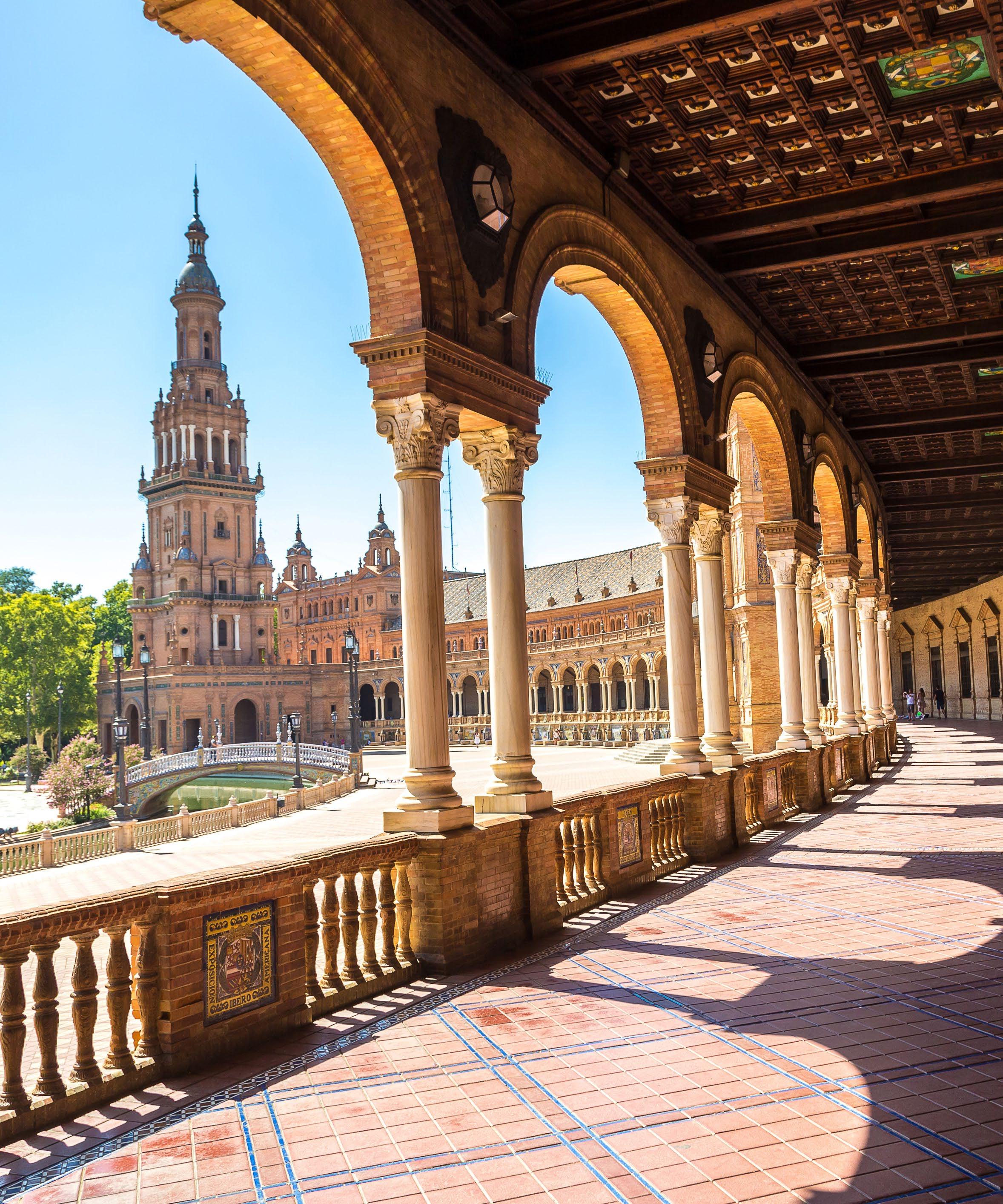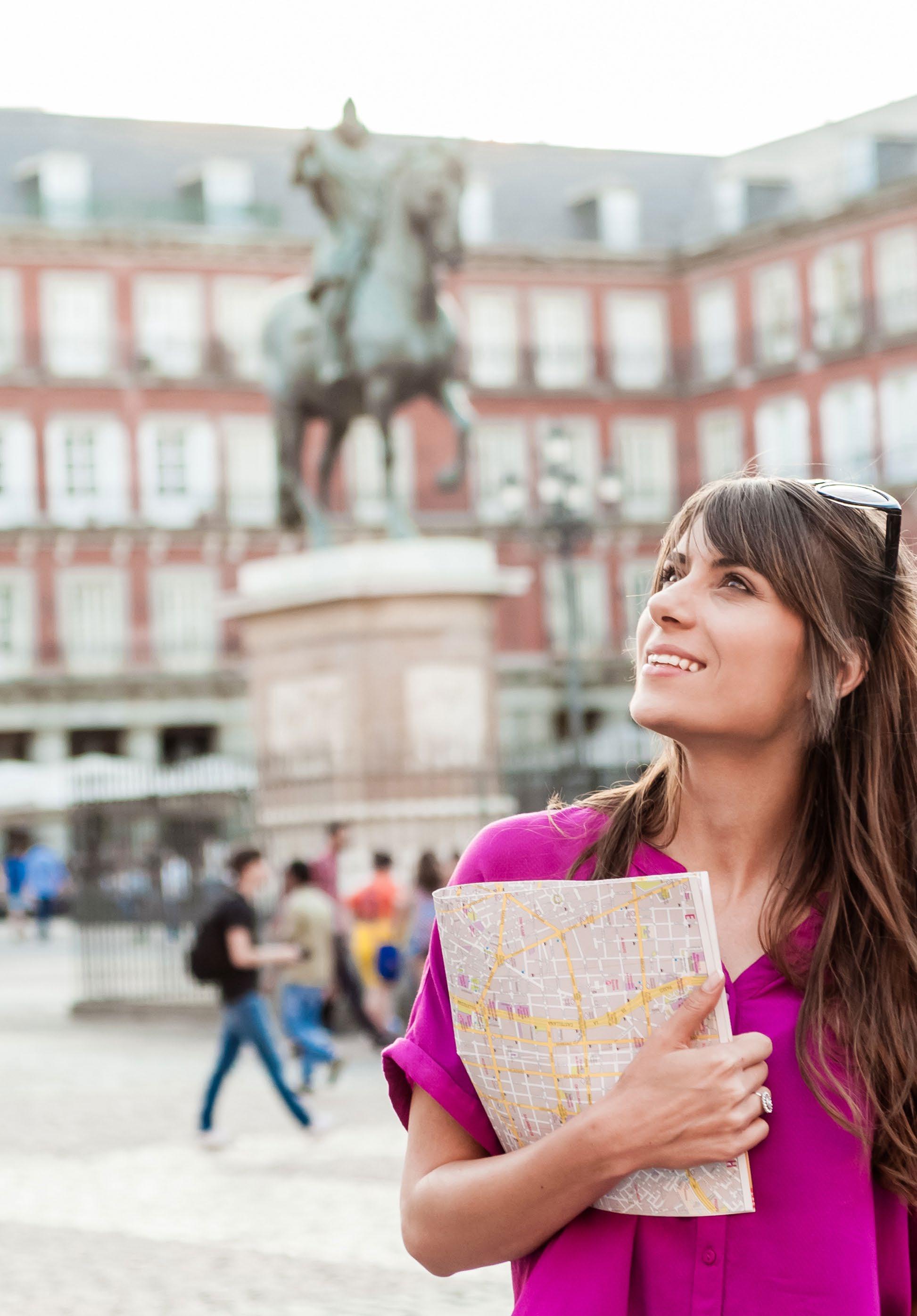
www.spain.info
in
CITY BREAKS
Spain
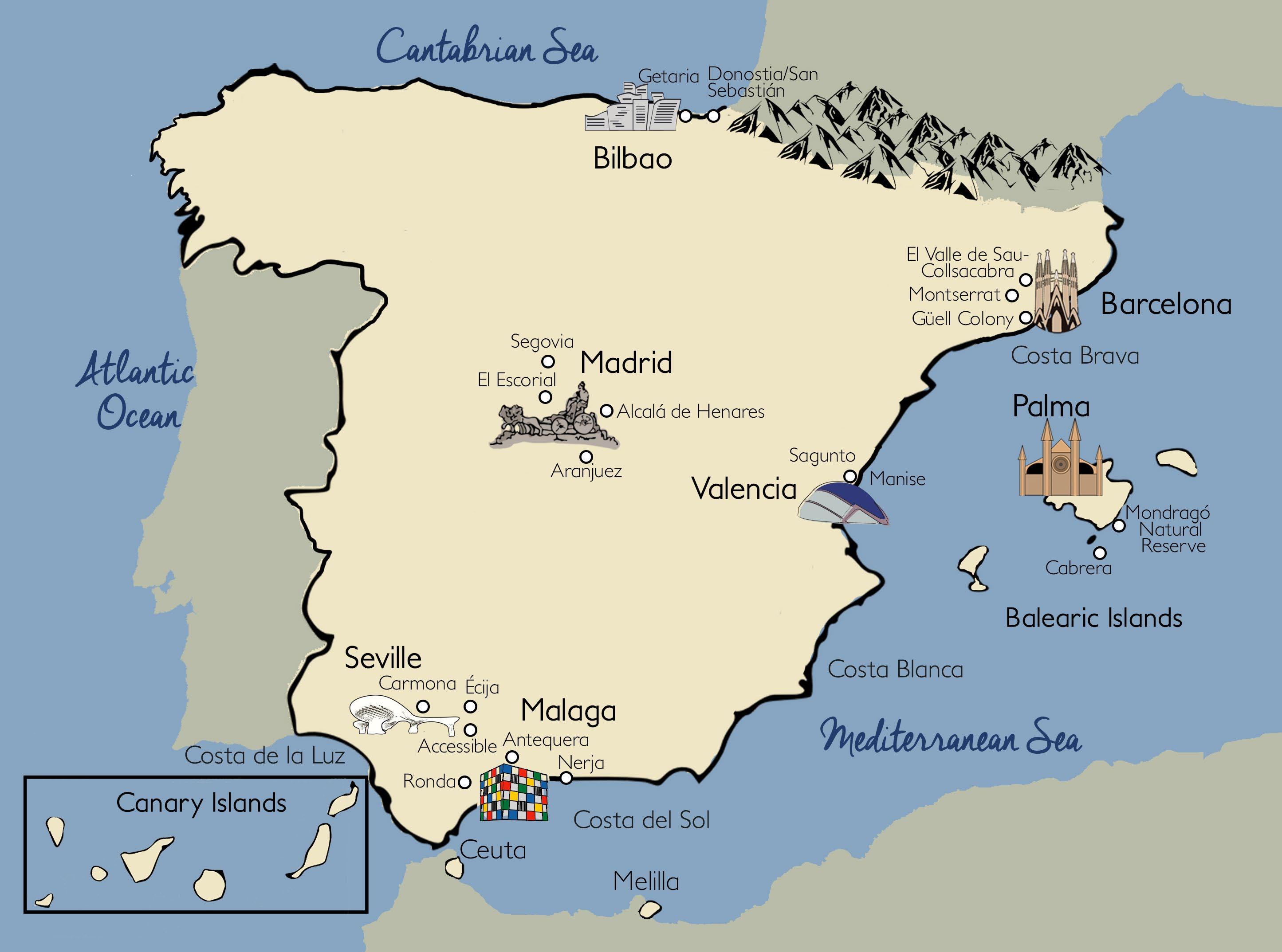
The
been created with the utmost care. However, if you find an error, please help us to improve by sending an email to
Ministry of Industry and Tourism Published by: © Turespaña Created by: Lionbridge NIPO: 086-17-054-7 FREE COPY
content
leaflet
brochures@tourspain.es Front Cover: Plaza
Back cover: Plaza de España square, Seville 2 CONTENTS Introduction 3 Come and enjoy Spain for two or more days 4 Madrid, the city of art 4 Barcelona, city of Modernism 8 Seville, city of light 12 Malaga, city of museums 16 Bilbao, city of gastronomy 20 Valencia, avant-garde city 24 Palma 27 International Airports Transport 31
of this
has
Mayor square, Madrid

Any time of the year is ideal for a city break in Spain. Enjoy a couple of memorable days in one of our main cities.
Discover all its charm as you stroll through the streets and parks, enjoy the culture, a little shopping and make a gastronomic tour. You'll want to come back again soon!
Take a flight and get from anywhere in Europe to cities like Madrid, Barcelona, Seville, Malaga, Bilbao and Palma de Mallorca in just a few hours. Once in Spain, it's easy to make short trips from one city to another by plane or highspeed train
You can just feel the culture in every corner of our cities. Stroll around historic neighbourhoods like Madrid de los Austrias and the Gothic Quarter in Barcelona, visit the Picasso Museum in Malaga and make the most of Seville's cultural agenda.
Then there are incredible parks like the Retiro in Madrid and the María Luisa Park in Seville, green areas which really are the lungs for these cities.
Spain is a cheerful, welcoming and open-minded country. We invite you to discover our customs and spend a few days enjoying memorable festivities You'll have a great time at the “Fallas” in Valencia (Intangible Cultural Heritage), the “Semana Grande” Festival in Bilbao and the “La Mercé” Festivities in Barcelona.
Savour Spain's traditional as well as its avant-garde cuisine. Visit traditional and avant-grade restaurants, gastronomic markets and try some of the best wines in the world.
3
a METROPOL PARASOL
SEVILLE
INTRODUCTION
Don't worry, the excellent quality of public transport will enable you to get around in the cities with no problems. The wide variety of hotel accommodation means you'll be able to choose the best alternative to suit your requirements. Take a dip in the pool on a terrace with sea views or get your strength back in a spa after a long walk around the city.
Spain is cheerful and welcoming, find out for yourself. We welcome you with with open arms!
COME AND ENJOY SPAIN FOR TWO OR MORE DAYS
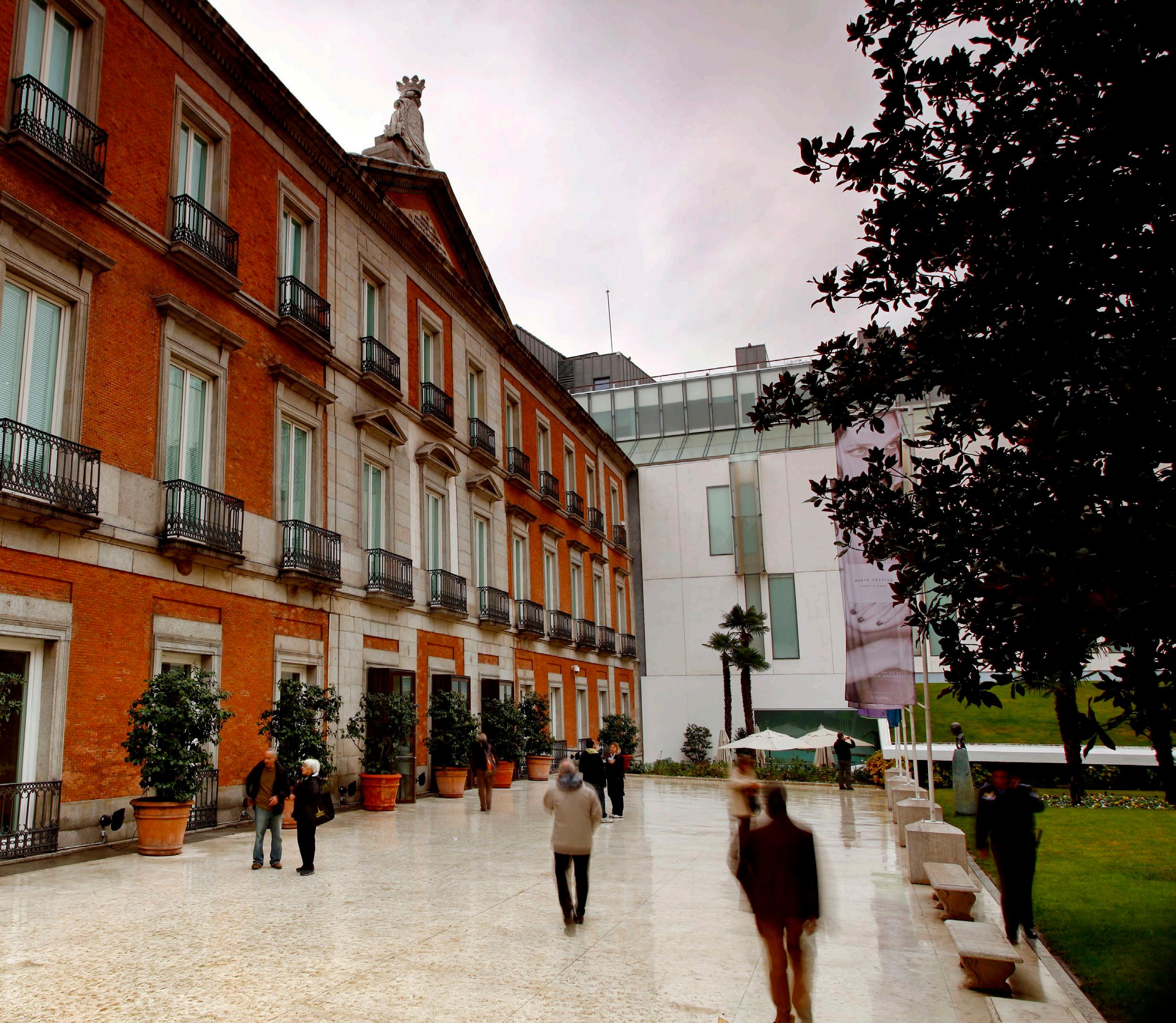
MADRID, THE CITY OF ART
You can wander through streets steeped in history, discover some of the more than 60 museums, stroll around parks and gardens and enjoy an exciting cultural programme... and why not, enjoy the legendary Madrid nightlife. Madrid is a modern and welcoming city with a multitude of things to see and do. Come and discover one of Europe's most entertaining cities.
4 CITY BREAKS
THYSSEN-BORNEMISZA MUSEUM MADRID
DAY 1: ROUTE FOR HISTORY AND MUSEUMS
As a starting point, Madrid offers visitors an incomparable tour: The “Paseo del Arte” or “art walk”, with its concentration of museums, palaces and beautiful gardens. Starting out from the monumental fountain of Cibeles you'll find some of the best art collections in the world in the Thyssen-Bornemisza Museum, the Prado Museum and the Reina Sofía Museum which houses great works of contemporary art like Picasso's Guernica.
Nearby you can enjoy beautiful, interesting places like the Royal Botanical Gardens which has species of plants and trees more than 200 years old.
To whet your appetite, move on to Malasaña, the scenario for the “Movida madrileña” counter-cultural movement of the 80s, and Chueca the focal point for the city's LGBTQI+ scene. Two fashionable neighbourhoods where you can eat in truly original places and enjoy some alternative shopping.
Take a relaxing walk or cycle through the El Retiro Park, an emblematic garden full of statues, fountains and magical little enclaves. Together with paseo del Prado, it makes up the “Paisaje de la luz”, UNESCO World Heritage. You can also row out on the lake, watch street performers and admire monuments like the Crystal Palace, a beautiful building that used to be a greenhouse and is now used for holding temporary exhibitions.
Another area where the natural environment plays a leading role is Madrid Río, a large green area running along-

side the Manzanares River with more than 10 kilometres of pedestrian routes. When night falls it's time to enjoy the atmosphere in the La Latina neighbourhood, one of the oldest and most charismatic in the city. In the winding streets and beautiful little squares you'll find some of Madrid's most traditional restaurants and plenty of places to enjoy some tapas.
5
MADRID,
CITY OF ART
a REINA SOFÍA NATIONAL ART MUSEUM MADRID
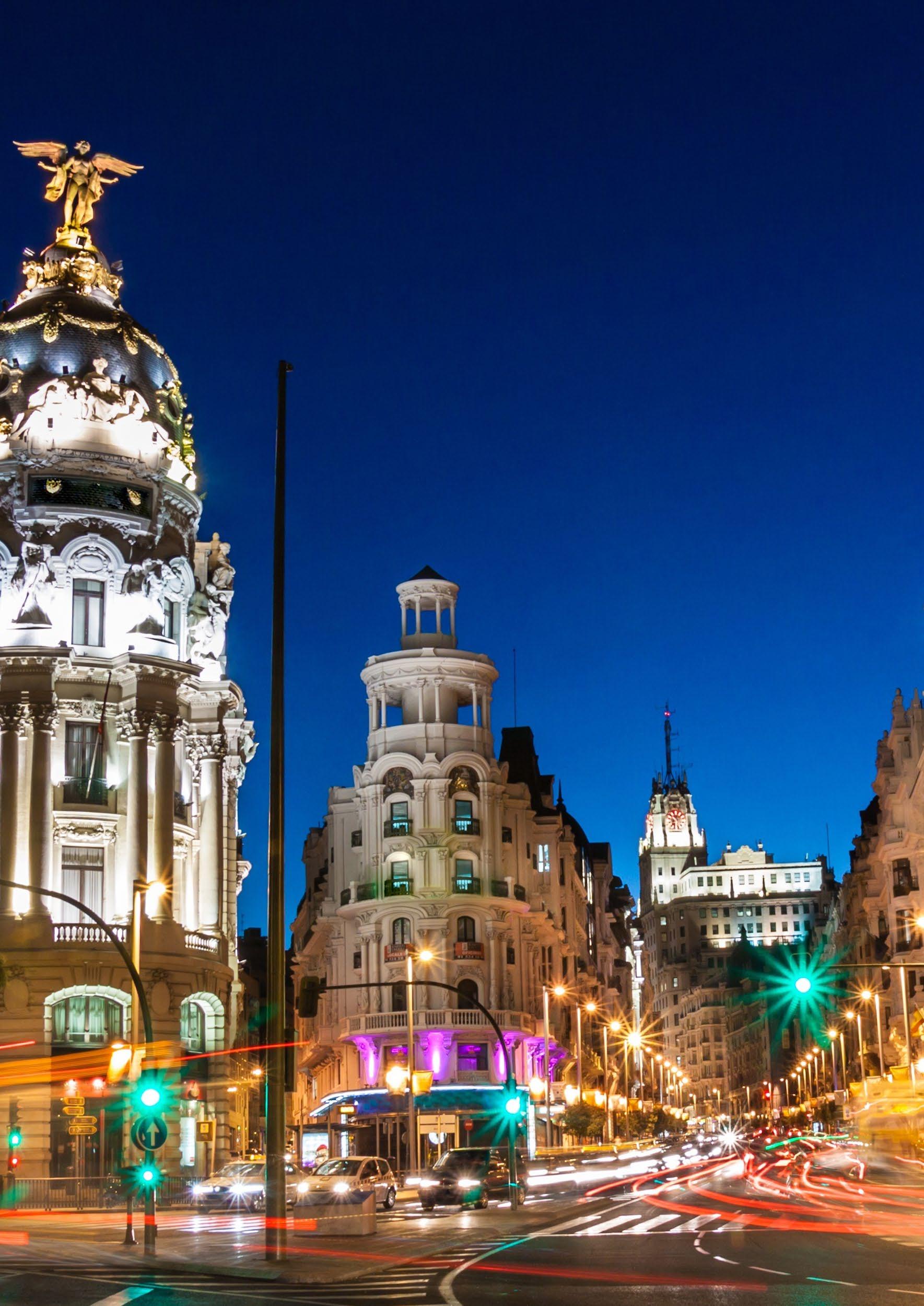
DAY 2: THEATRE AND SHOPPING
A day spent shopping and enjoying yourself will prove the best way of getting to know other parts of the city. You'll be seduced by luxury in the Golden Mile, in the district of Salamanca. This is where you'll find the most exclusive shops, including the top Spanish firms. The busy Gran Vía is another good shopping area where most of the fashion chains can be found.
CITY BREAKS
GRAN VÍA MADRID
6
Photo: Achiartistul/123rf.com
Take a walk through the Madrid de los Austrias, the home of such representative monuments as the Puerta del Sol, and the Royal Palace. When it's time to rest, sit down with a vermouth near puerta del Sol or go to the San Miguel Market for a few gourmet tapas.
The Barrio de las Letras or District of Letters pays homage to the great writers living here in Spain's Golden Age and is one of the city's cultural focal points. Here you'll find some of the most renowned of Madrid's extensive network of theatres.
If you're looking for a great show, then you could try a musical in the Gran Vía, or perhaps an opera at the Teatro Real.
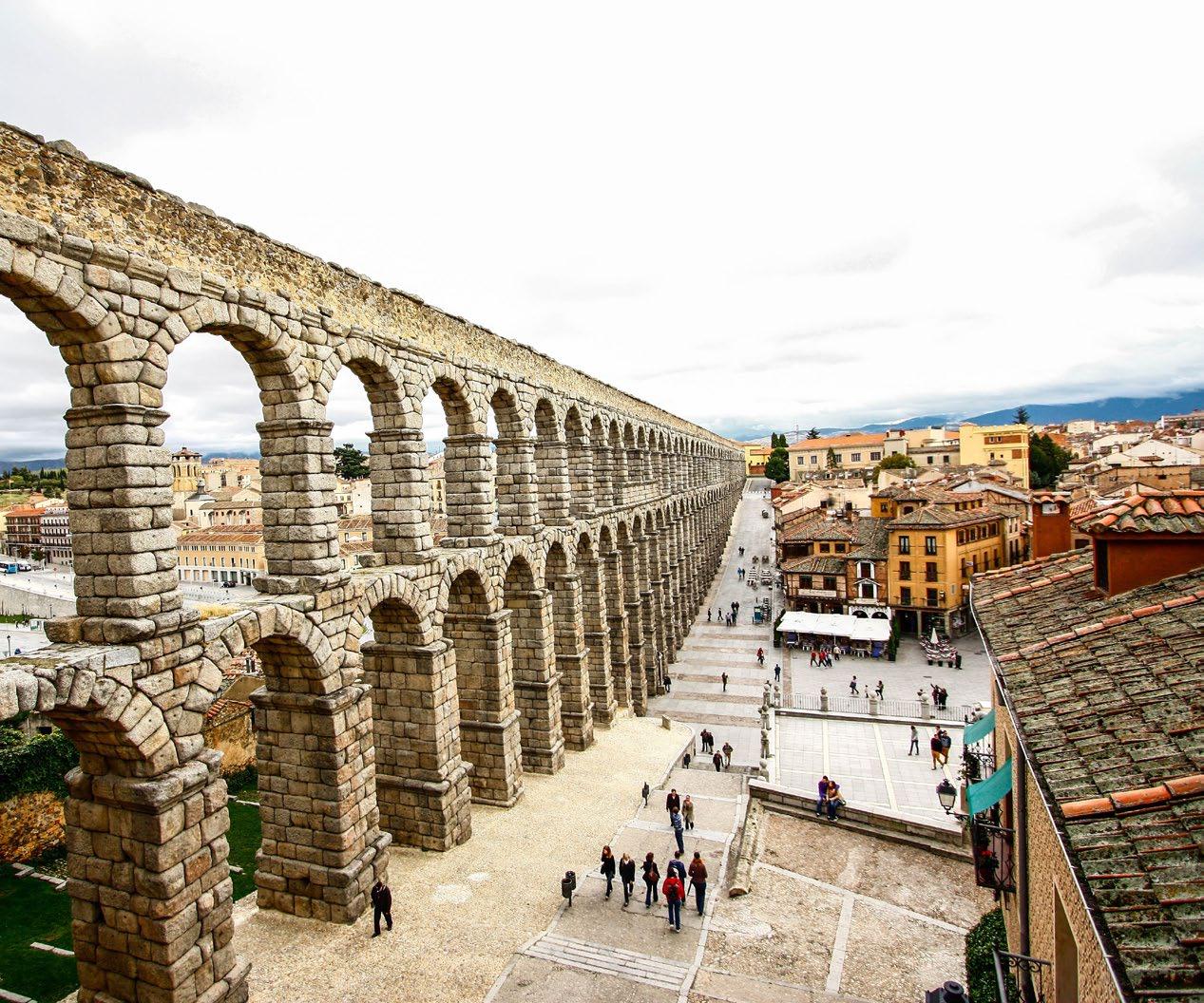
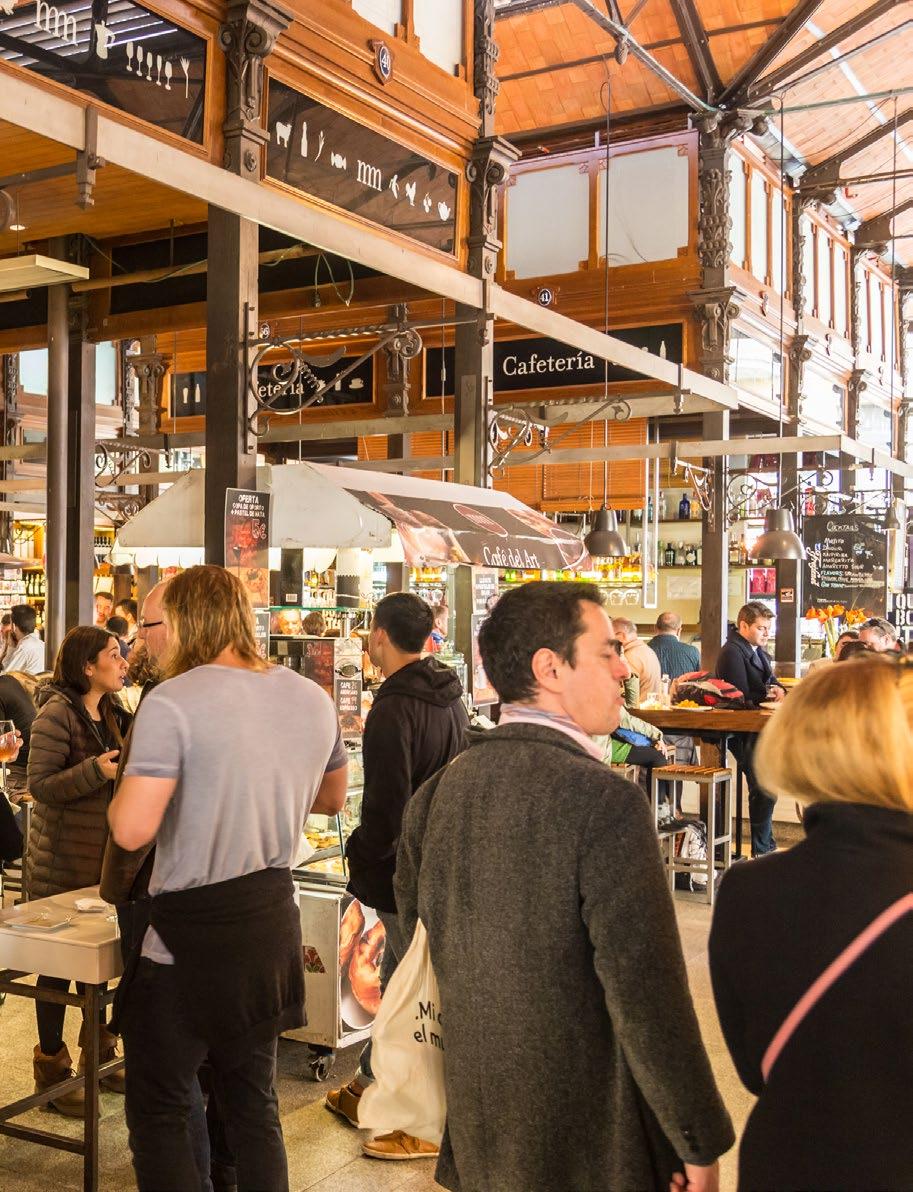
IF YOU'RE STAYING FOR A FEW MORE DAYS...
Less than an hour's drive from Madrid there are a number of interesting cities like Alcalá de Henares, a UNESCO World Heritage Site and the birthplace of Miguel de Cervantes. You can walk around the churches and mansions, the historical University and follow in the footsteps of the author of Don Quixote.
Segovia, which is also proud to be a World Heritage Site, has the Roman Aqueduct, the Plaza Mayor square and the Jewish quarter as its main attractions for the visitor.
Very near Madrid there are other delightful towns with so much history, like Aranjuez and El Escorial
L Further information: www.esmadrid.es
7
a SAN MIGUEL MARKET
MADRID
Photo: kasto/123rf.com
a SEGOVIA
MADRID, CITY OF ART
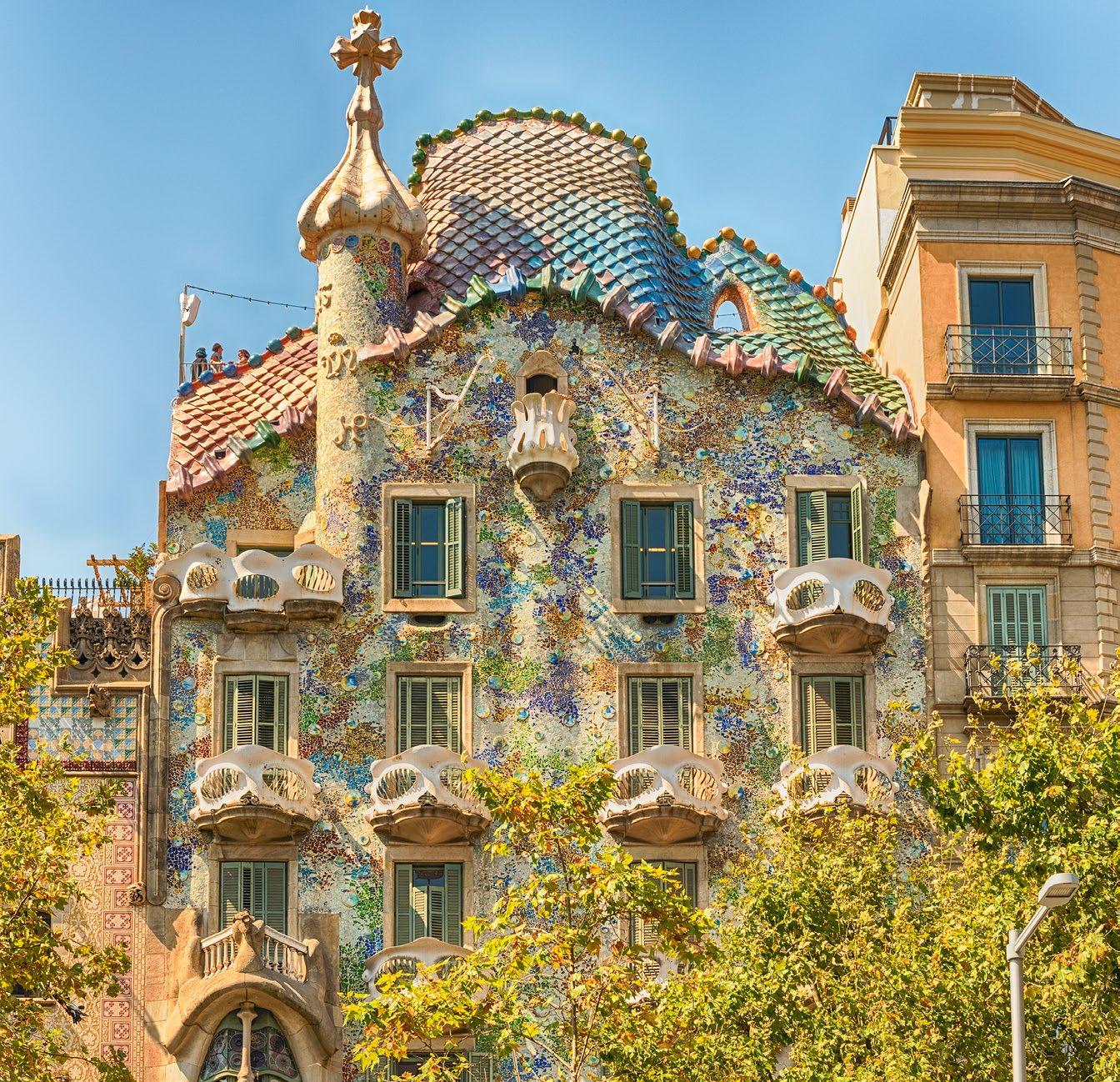
BARCELONA, CITY OF MODERNISM
Discover why Barcelona is one of the world's most visited cities. The cosmopolitan feel, the privileged location on the shores of the Mediterranean and the cultural attractions will make you want to come back again and again. It is the capital of Catalonia, the birthplace of the major 20th-century avant-garde movements and the epitome of a modernist city. It also has Roman remains and medieval neighbourhoods through which you can stroll and just feel the history.
_ CASA BATLLÓ BARCELONA
DAY 1: MODERNIST ROUTE
Your day starts in the heart of Barcelona. Here you'll find the Basilica of La Sagrada Familia , the icon of the city, UNESCO World Heritage and its greatest exponent of Modernism. It is the extraordinary work of Antoni Gaudí; its most spectacular feature being the pointed towers. You can climb to the top of some of them and enjoy a beautiful panoramic view of the city from high up.
If you go straight along the Avenida de Gaudí it will take just five minutes to reach the modernist enclosure of Sant Pau, with colourful stained-glass windows and golden domes. History goes
hand-in-hand with avant-garde architecture in this former hospital (also UNESCO World Heritage) designed by Lluís Domènech i Montaner, one of the essential celebrities of Modernism. The city's most surprising buildings and monuments are shared between Montaner and Gaudí. The latter was responsible for the Parque Güell (UNESCO World Heritage) which is like something out of a fairy tale. A walk through this park awakens even the least vivid imagination. The curious shapes and bold colour combinations mixed with the vegetation create a magical world.
8 CITY BREAKS
Rubino/123rf.com
Photo: Marco
Stop for a rest and something to eat in the Gracia neighbourhood where the narrow streets and little squares are home to real culinary treasures. Here you'll find everything from traditional cellars and bars to prime examples of international and signature cuisine. Once your hunger has been satisfied you can move on to the Paseo de Gracia, one of the cities main thoroughfares. In this area you'll find two of Gaudí's most representative buildings, La PedreraCasa Milà and the Casa Batlló, where the light, the colour and the organic shapes blend together with the wood, the ironwork and the stoneware. Pure magic and both awarded the UNESCO World Heritage declaration.
In the evening you can visit El Born, Barcelona's most sophisticated neighbourhood. An area full of charm where you can admire the church of Santa María del Mar or enjoy a pleasant dinner in one of the restaurants or delightful terraces.
DAY 2: THE ART OF SHOPPING
Visit the ancestral heart of Barcelona in the Gothic Quarter. The narrow streets and medieval buildings will take you back in time. Visit the palaces which are now the Town Hall and the “Generalitat” or Regional Government, the Cathedral and the Gothic Basilica of Santa María del Pi.


BARCELONA, CITY OF MODERNISM
a SANTA MARÍA DEL MAR CHURCH AND SQUARE BARCELONA
Photo: Marco Rubino/123rf.com

Mid-morning, we suggest you take a culinary tour through the district of Ciutat Vella. There you can enjoy the lively atmosphere of the Santa Caterina Market and its colourful roof and ceiling. Try the exquisite dishes served at one of the stalls and some of the delicious products of Catalan cuisine, like butifarra sausage and bread with tomato.
If you have a sweet tooth try some hot chocolate with “churros” (traditional fried-dough pastries) in one of the renowned chocolate shops in the Calle Petritxol or go to the Ciudadela Park, a garden enclosure built to imitate the Luxembourg gardens in Paris and where there are several museums, a collection
of sculptures, the Catalonia Parliament building and even a municipal zoo.
In the evening you can go shopping in La Rambla and the surrounding area, one of the most colourful and lively areas in the city and home to the some of Barcelona's oldest and most emblematic establishments.
Another option is to visit the extensive district of Sants-Montjuïc, overlooked by the hills of Montjuïc. The Castle of Montjuïc and other look out points on these hills offer panoramic views of Barcelona and allow to contemplate all the splender of the Mediterranean.
10 CITY BREAKS
a PORT VELL BARCELONA
Photo: Mauro Rodrigues/123rf.com
At the most westerly end of the city you'll find the Monastery of Pedralbes, an excellent example of Catalan Gothic architecture. From the beautiful cloister and chapels to the areas where the monks undertook their everyday activities, it is a place where time appears to have stood still. Next to it you'll find the Palacio Real de Pedralbes, an ancient country mansion restored in the 19th century and surrounded by impressive gardens.
When evening comes you can enjoy the opera at the Gran Teatro del Liceo, one of the most important in Europe. You not only get to enjoy the performance, you can also visit its most representative areas and learn about the details of its magnificent architecture.
For a dinner by the sea, you should go to Port Vell and Maremagnum, a shopping centre with a wide selection of restaurants and numerous terraces with views of the Mediterranean.
IF YOU HAVE MORE TIME…
You could perhaps visit the Güell colony (Santa Coloma de Cervelló), a group of Modernist buildings of great historical and cultural value. If you're looking for a natural environment, the Sau-Collsacabra valley, with streams, cliffs and pre-historic caves, and the Montserrat Nature Reserve are two magnificent options.
Your getaway won't be complete without taking a dip at one of the sublime, sandy beaches in nearby towns like Vilanova i la Geltrú or Sitges.
L Further information: www.barcelonaturisme.com
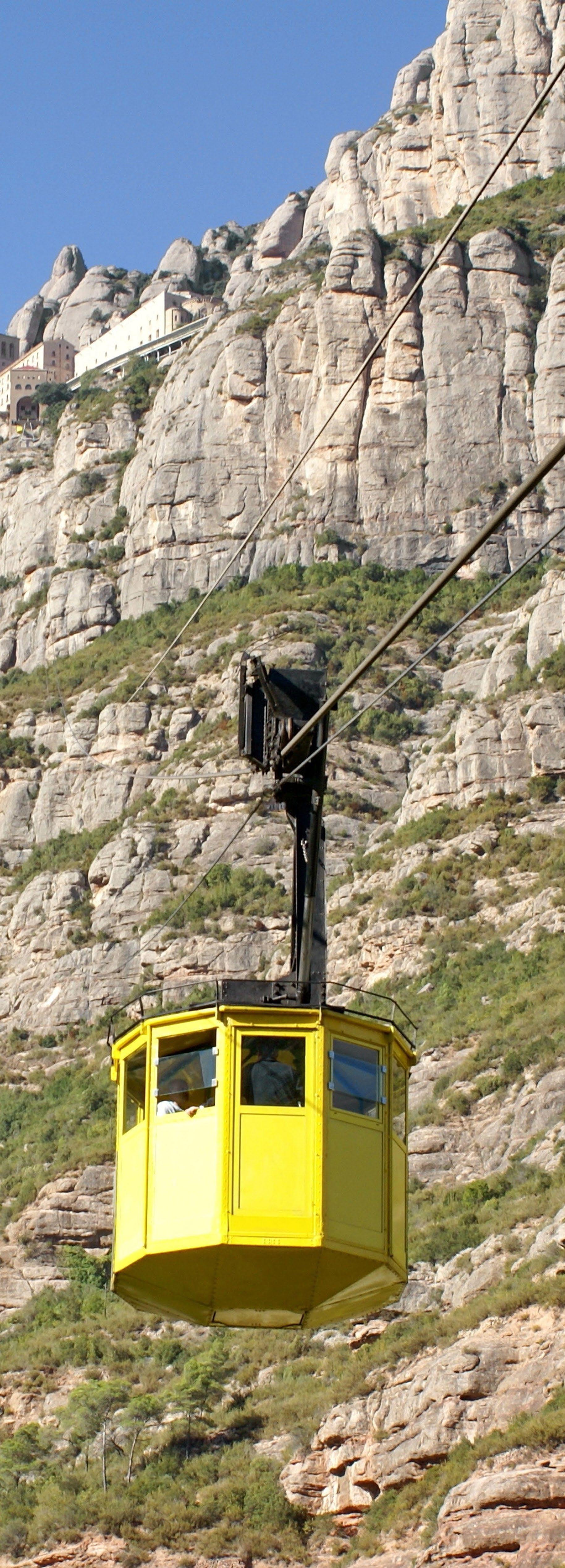
11
BARCELONA, CITY OF MODERNISM
` MONTSERRAT NATURE RESERVE BARCELONA
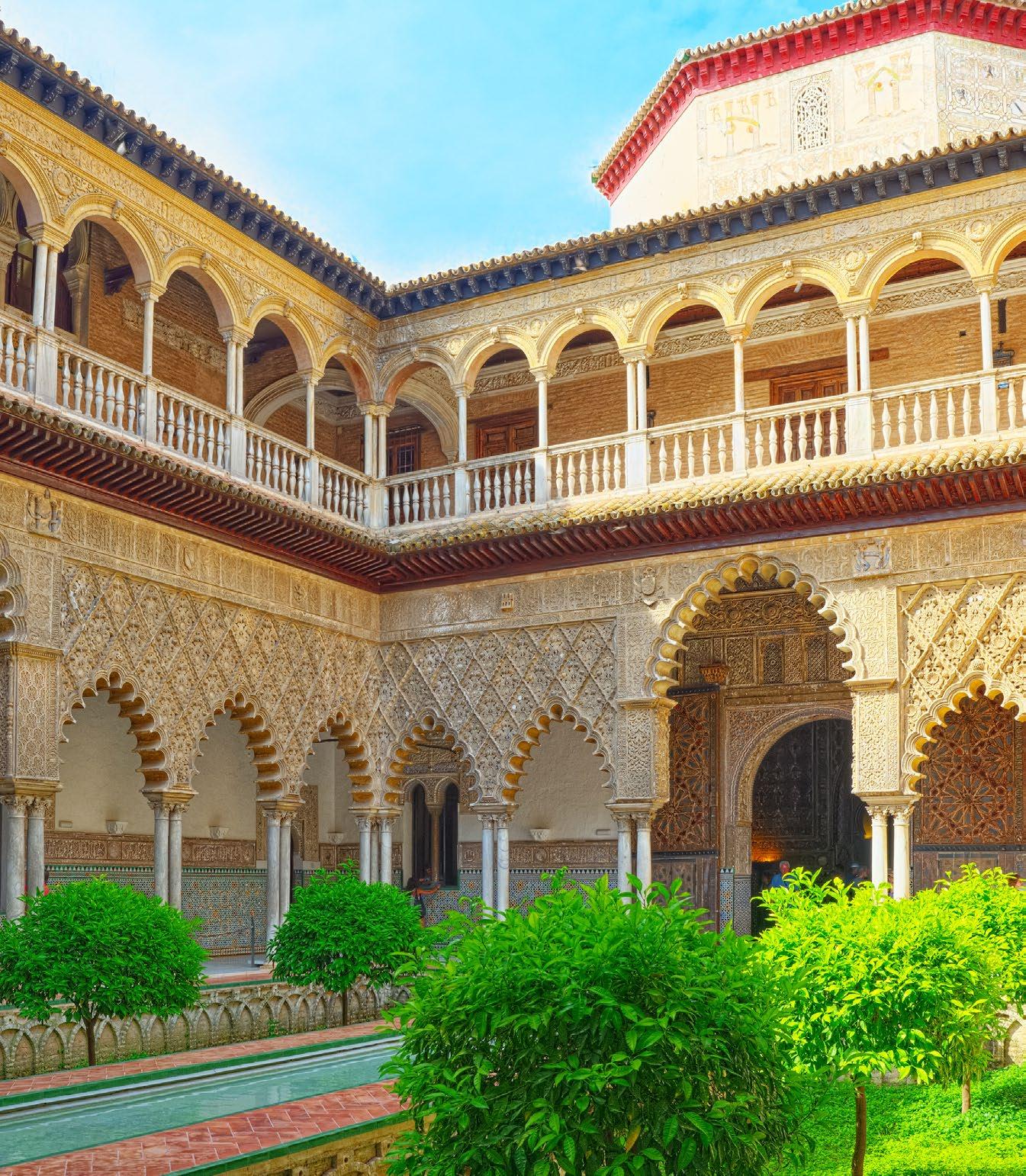
DAY 1: HISTORY, TRADITION AND MODERNITY
Start your tour at the Real Alcázar fortress, one of the most spectacular monumental complexes in the world (UNESCO World Heritage). You'll feel like you're in Game of Thrones as you stroll through the interior and the gardens which were used as a location when the series was filmed. In the nearby Plaza del Triunfo, surrounded by historical buildings, you'll find the Archive of the Indies, UNESCO World Heritage and a principal point of reference for the study of Spain's presence in America.
Around the Alcázar stands the Santa Cruz neighbourhood, formerly the Jewish Quarter, where you'll find the authentic Seville and what used to be a synagogue, now the church of Santa María la Blanca. The narrow streets will
SEVILLE, CITY OF LIGHT
Visit Andalusia's capital and enjoy the lively atmosphere in the streets and squares while you discover some real cultural treasures. The influence of the Moorish culture has left an especially beautiful mark on the historic quarter. While you're there you really must go to a “tablao” and fall under the spell of Flamenco dancing and singing.
lead you to the Plaza de la Virgen de los Reyes where you'll find the Cathedral of Santa María de la Sede (UNESCO World Heritage). Climb up the ramps to the bell tower where you'll be rewarded with unforgettable views over the city from the Giralda, formerly a minaret on what was a Moorish mosque.
The route continues towards the Plaza Nueva or Plaza del Salvador, where tapas become an art form. There is a selection of small taverns and up-to-date bars offering delicious snacks in an incomparable atmosphere.
In the afternoon, continue on to the Guadalquivir, the river which has determined the history and the layout of the city. There you'll find the Torre
12 CITY BREAKS
_ REAL ALCÁZAR FORTRESS IN SEVILLE
Photo: Brian Kinney/123rf.com


del Oro, a defence fortress built in the 13th century. The interior houses the Naval Museum which contains models, compasses and ancient navigation charts.
Cross over the San Telmo or the Triana bridge to the other side of the river and you'll be in Seville's quintessential sailor's and Flamenco district. Dine on one of the terraces overlooking the Calle Betis, at the foot of the Guadalquivir, and enjoy the delights of Seville's night atmosphere. Or go to one of the numerous “tablaos”, given over exclusively to Flamenco, which has been awarded the UNESCO Intangible Cultural Heritage declaration.
DAY 2: HORSE-DRAWN CARRIAGE RIDE DOWN A ROUTE OF SCENTS AND FLAVOURS
One of the most traditional ways of discovering the majestic Plaza de España and the delightful María Luisa Park is to take a horse-drawn carriage. This architectural complex was designed to be the main building for the 1929 Latin American Exhibition. It is semi-elliptical in shape which symbolises Spain embracing its former American colonies, and looks out towards the Guadalquivir River as the suggested route to take to reach America.

13
SEVILLE, CITY OF LIGHT
a PLAZA DEL SALVADOR, SEVILLE
METROPOL PARASOL SEVILLE
a SEVILLE CATHEDRAL
Photo: Lucas Viani/123rf.com
Photo: Ievgenii Fesenko/123rf.com
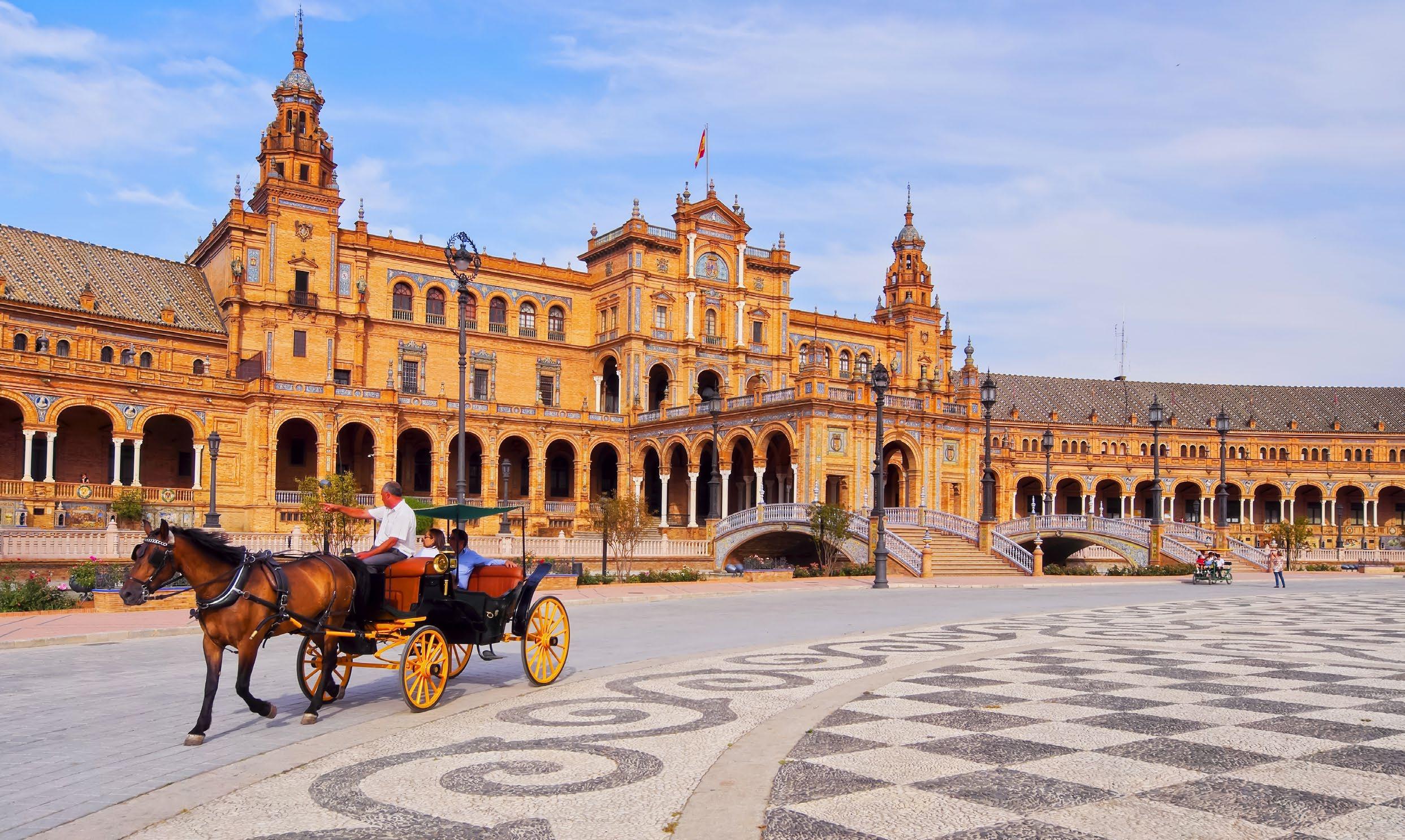
Then continue on towards the former Real Fábrica de Tabacos, where tobacco from the Americas was received and processed. It is one of the prettiest buildings in the city where the main character of Bizet´s Opera “Carmen” worked. All this before it became the headquarters for the University of Seville.
From there you can take the metro, the bus or hire a bicycle to complete the cultural route at the Fine Arts Museum. There you'll find a splendid collection of 17th century paintings from Seville, with works by great artists like Murillo, Velázquez and Zurbarán.
Enjoy the sunshine and the atmosphere as you stop for lunch in the Alameda de Hércules. The area around the oldest public gardens in Europe has recently been populated with tapas bars, delightful cafeterias and first-class restaurants.

14 CITY BREAKS
a PLAZA DE ESPAÑA
SEVILLE
Photo: Karol Kozlowski/123rf.com
Photo: joserpizarro/123rf.com
OLD ROYAL TOBACCO FACTORY UNIVERSITY OF SEVILLE
The evening is perfect for a walk through the San Luis neighbourhood as far as the Basilica of La Macarena and its Museum, one of the city's most important centres of religious devotion, especially at Easter when the Nazarenes take out their images for the procession.
Dine in the area around the Metropol Parasol, a wooden structure which the people of Seville have named as “The Mushrooms”. This avant-garde creation was designed by the architect Jürgen Mayer, and claims to be the largest wooden structure in the world. From the viewing platform you get sensational views over the city.
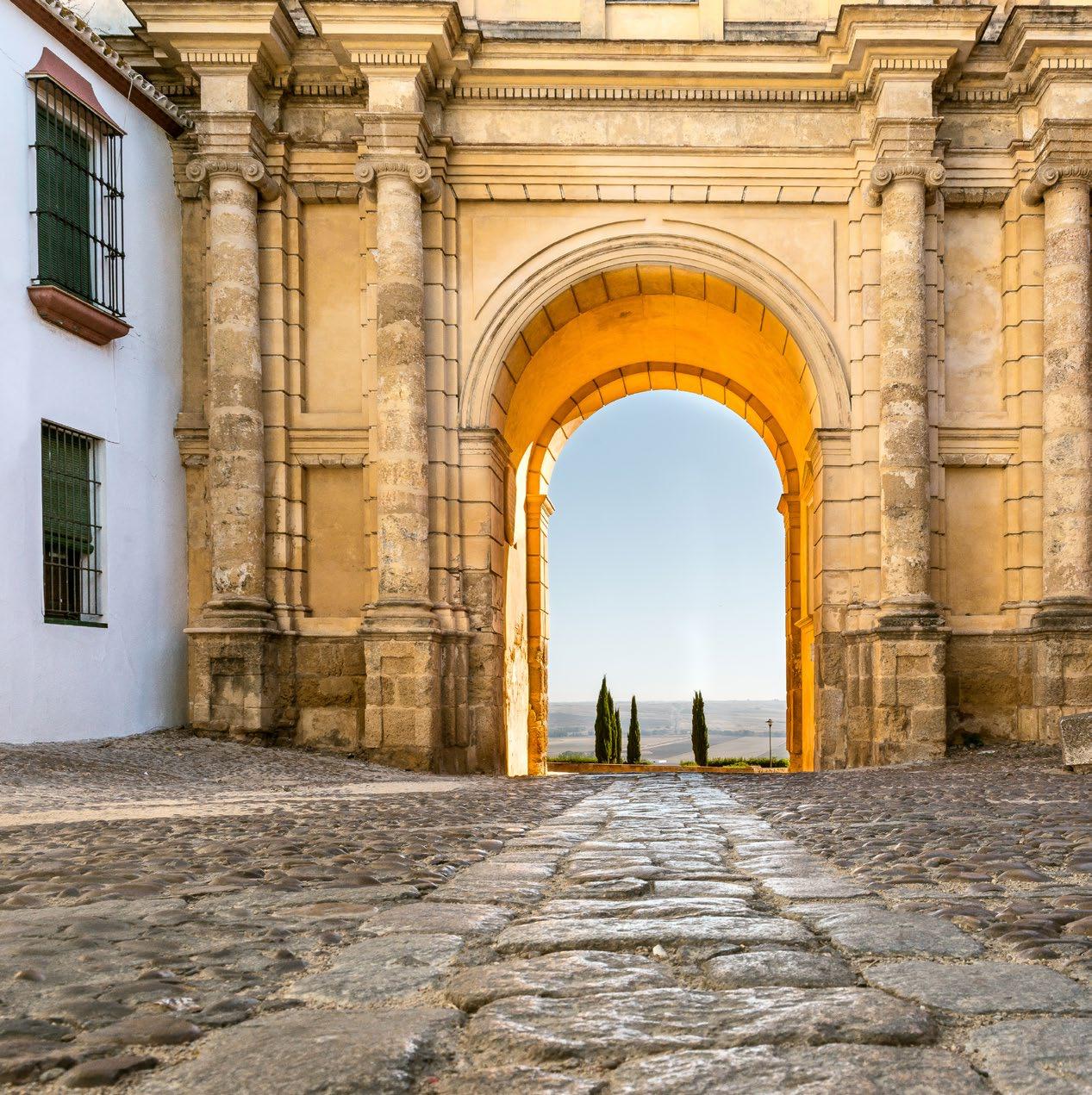
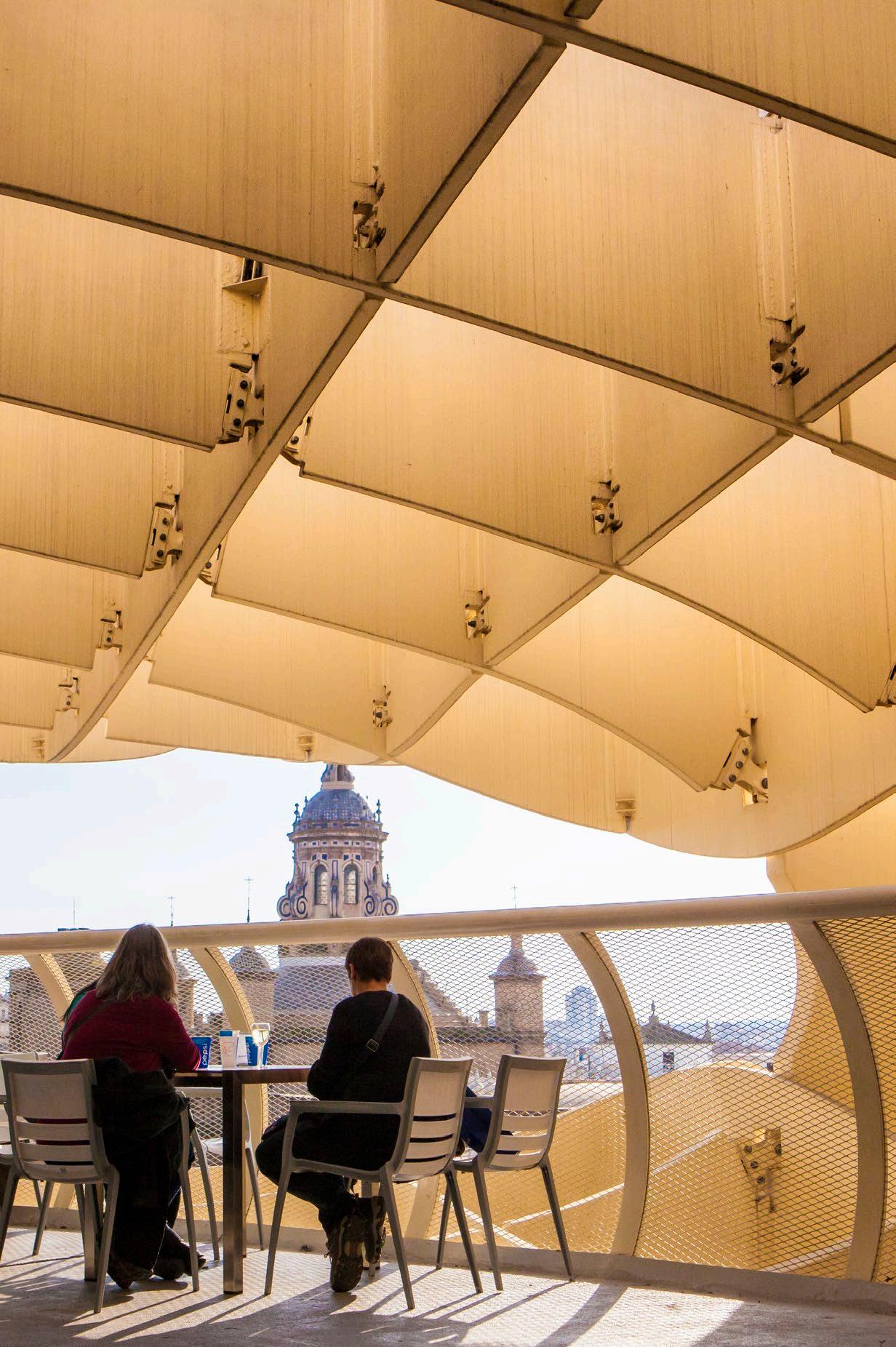
IF YOU HAVE MORE TIME…
You really should visit the towns and cities on the Baetic-Roman Route. In the Seville countryside you can explore Carmona, Osuna and Écija, where history lives on in the form of castles and beautiful Baroque buildings.
The archaeological complex of Itálica, in Santiponce, contains the ruins of what was the first Roman city built outside what is now Italy. There you'll find the remains of the amphitheatre, precious houses, thermal baths and other public buildings.
L Further information: www.visitasevilla.es
15
SEVILLE, CITY OF LIGHT
a CORDOBA GATE CARMONA, SEVILLE
b METROPOL PARASOL SEVILLE
MALAGA, CITY OF MUSEUMS
Enjoy the sunshine in one of Spain's most fashionable cities. The Gibralfaro castle casts a watchful eye over this lively and bustling city full of beautiful little corners. You'll just love the beaches, the museums and the hospitality of the people.
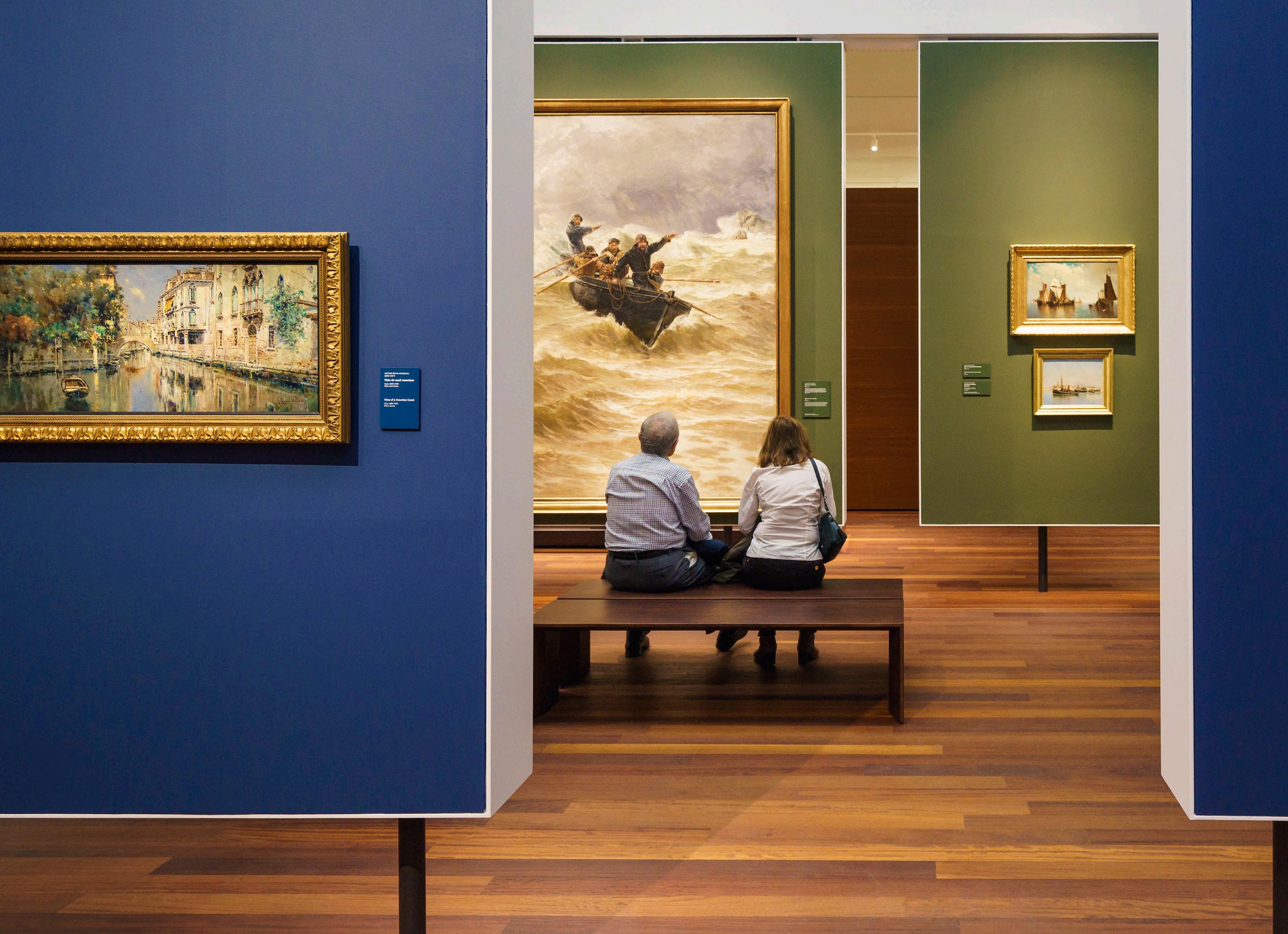
DAY 1: SHOPPING AND CULTURE
The calle Marqués de Larios and the surrounding area, in the historical town centre, are perfect for a morning's shopping. It is the commercial hub of the city where you'll find the main shops selling fashion and accessories.
You can round off the morning with a cultural visit to one of Malaga's many museums. The city where the genius Picasso was born maintains vivid memories of one of the 20th century's greatest artists. The Buenavista Palace houses the Picasso Museum which represents eight decades of his artistic production.
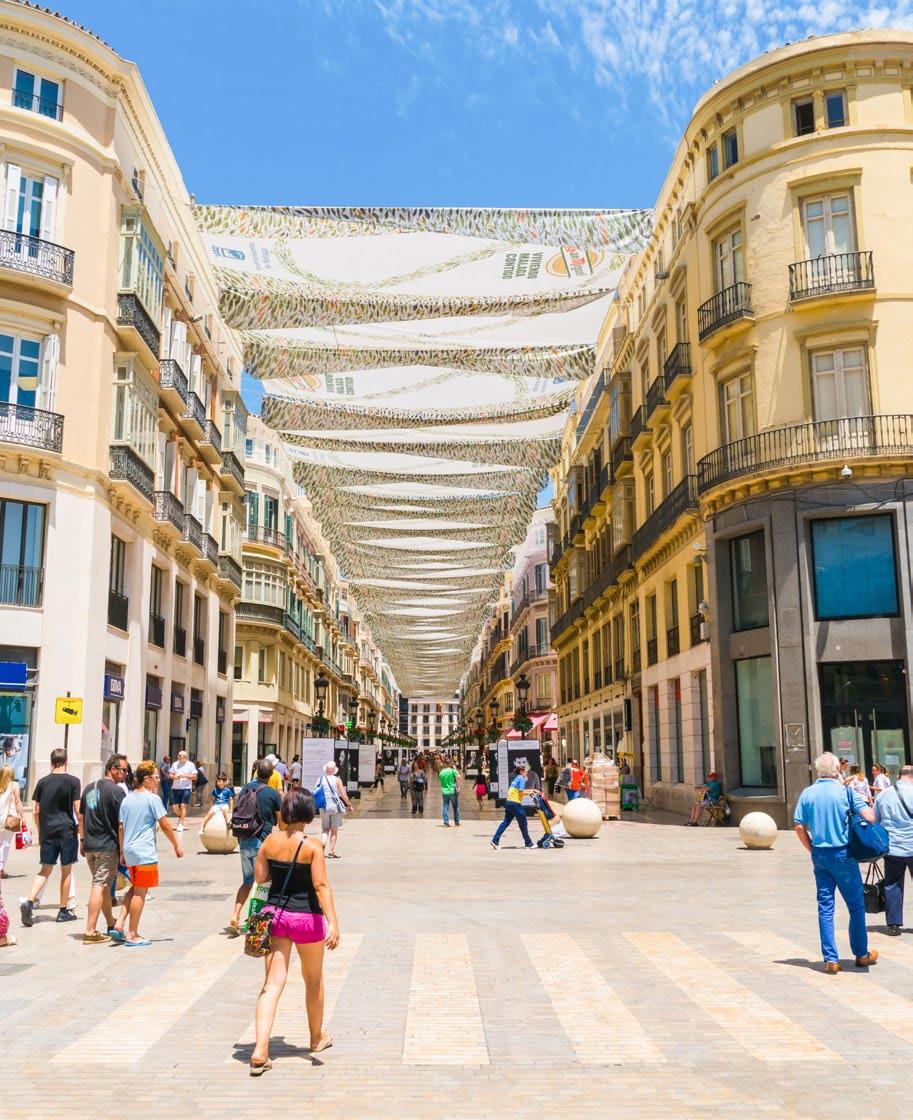
16 CITY BREAKS
a MALAGA MUSEUM
Photo: Malaga Tourist Board
a CALLE MARQUÉS DE LARIOS MALAGA
Photo: Ivo De Rooij/123rf.com
There are 40 museums in the capital of the Costa del Sol, so you have plenty to choose from. Looking for some surprising contemporary art? Your best choice is the Pompidou Centre and its multicoloured cube. Here you'll find benchmark works from the collection of its counterpart in Paris.
If classical painting is more your style, then try the Carmen Thyssen Museum where there is a comprehensive collec-tion of 19th and 20th-century Andalusian art. Or visit the Collection at the Saint Petersburg-Malaga Russian Museum in the unique Tabacalera building, with over a hundred works from the 15th to the 20th centuries.
Midday is the ideal time to stop for a few tapas and a glass or two of Malaga wines
near the Cathedral of La Encarnación, one of the city's most important monuments, after you have been inside for a visit. It has its own gardens and a magnificent patio, as well as the ashlar in the choir, the work of the sculptor Pedro de Mena.
It is less than a ten-minute walk to the Alcazaba, an 11th century Moorish fortress-palace which is a blend of history and beauty. Climb up to the battlements for a magnificent view of Malaga and learn more about how it was built and its occupants, from the archaeological samples in the interior.
At its feet there is what used to be a Roman theatre, an ideal area for a pleasant dinner in one of Malaga's most traditional bars.

17
MALAGA,
CITY OF MUSEUMS
b POMPIDOU CENTRE MALAGA
Photo: pabkov/123rf.com

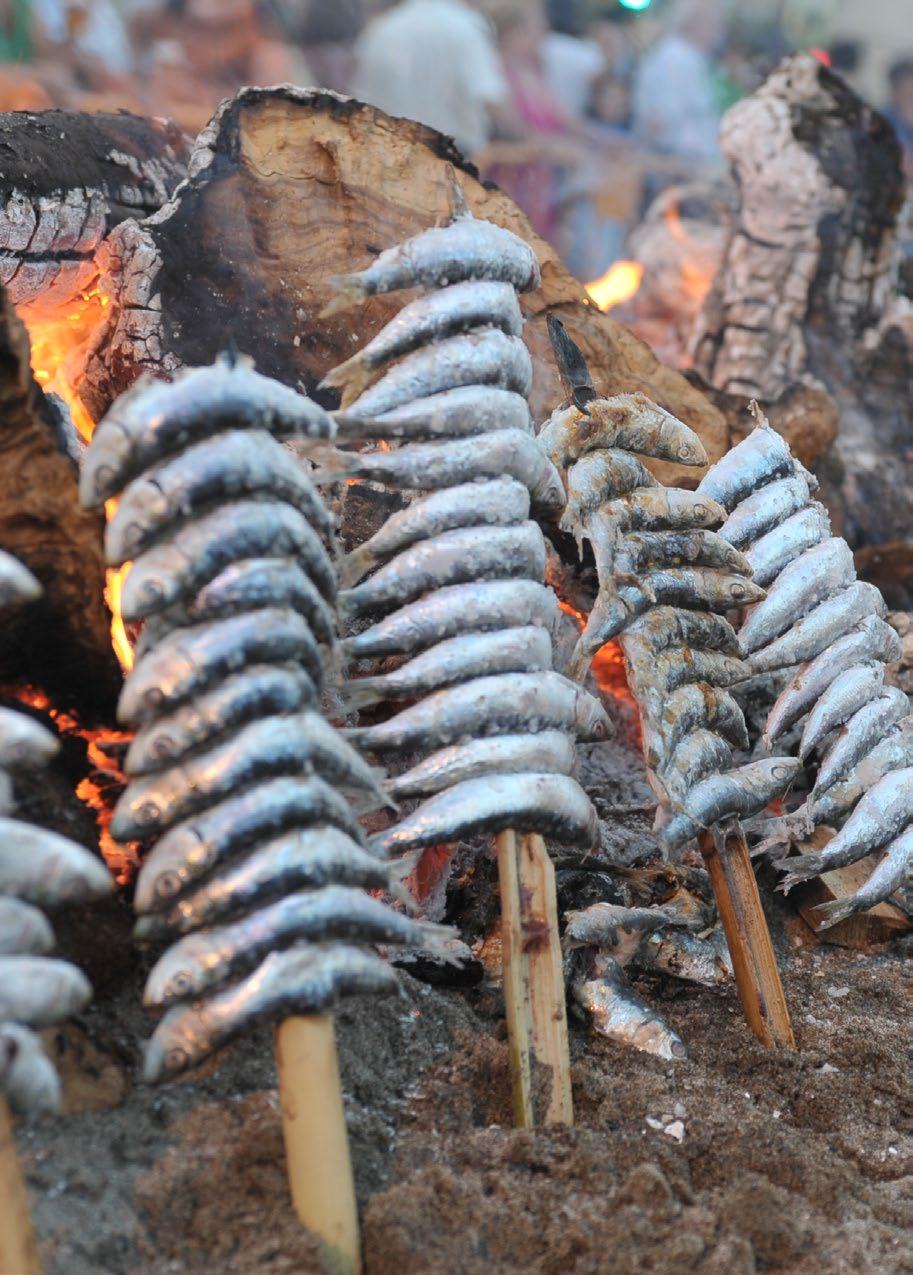
DAY 2: A DAY AT THE BEACH AND THE BOTANICAL GARDENS
An essential part of any visit to Malaga is to spend some time on one of the city's beaches. One of the most popular with local residents is La Malagueta, since it is very near both the city centre and the port. Forget the stress, lie under the sun on the golden sands and cool off with a nice dip in the sea.
All along the beach front there are numerous places where you can get a bite to eat. The most typical ones are the beach bars serving traditional skewered grilled sardines, the genuine flavour of Malaga.
18 CITY BREAKS
a LA MALAGUETA BEACH MALAGA
Photo: Eduardo Huelin/123rf.com
SARDINE KEBABS
In the evening you can enjoy the hundred-year-old trees and magnificent surroundings in the Botanical-Historical Gardens of La Concepción. Follow one of the routes suggested by the garden itself (the forest route, the lookout points and round the world in 80 trees) or explore the surprising palatial house of the Loring family, part of the Malaga gentry, for whom it was built at the end of the 19th century.
You can end the day in the shopping centre in the port where you'll also get one of the best panoramic views of the city's monumental district.
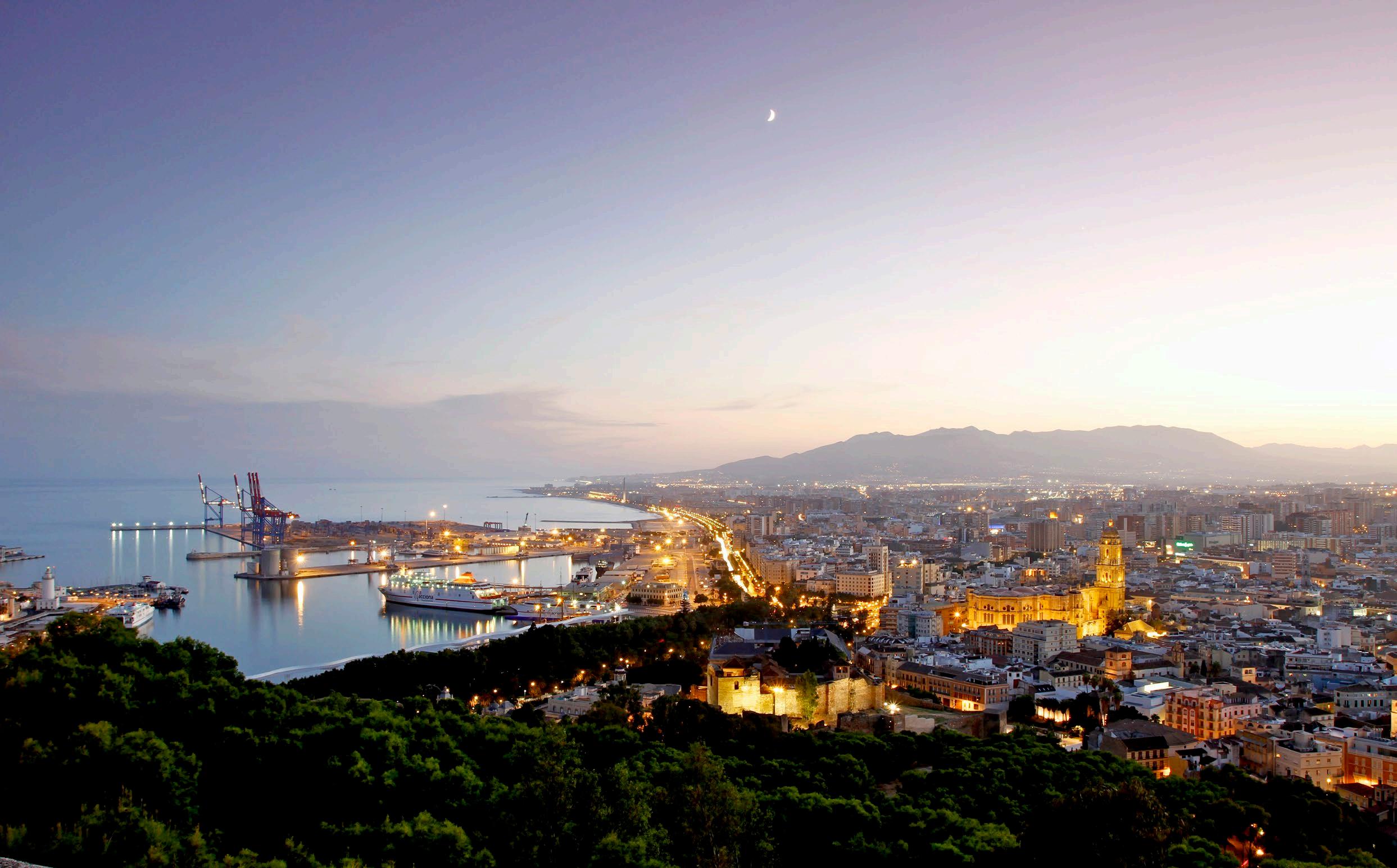
IF YOU HAVE MORE TIME…
Visit the dolmens in Antequera and Ronda, nearby towns with a lot of charm and home to these megalithic remains and other architectural treasures. In Ronda there is an amazing gorge which is over 150 metres deep dividing the city in two and crossed by two incredible bridges. Or you could try one of the beaches in Nerja and see the caves, with really original rock formations and cave art.
L Further information: www.malagaturismo.com
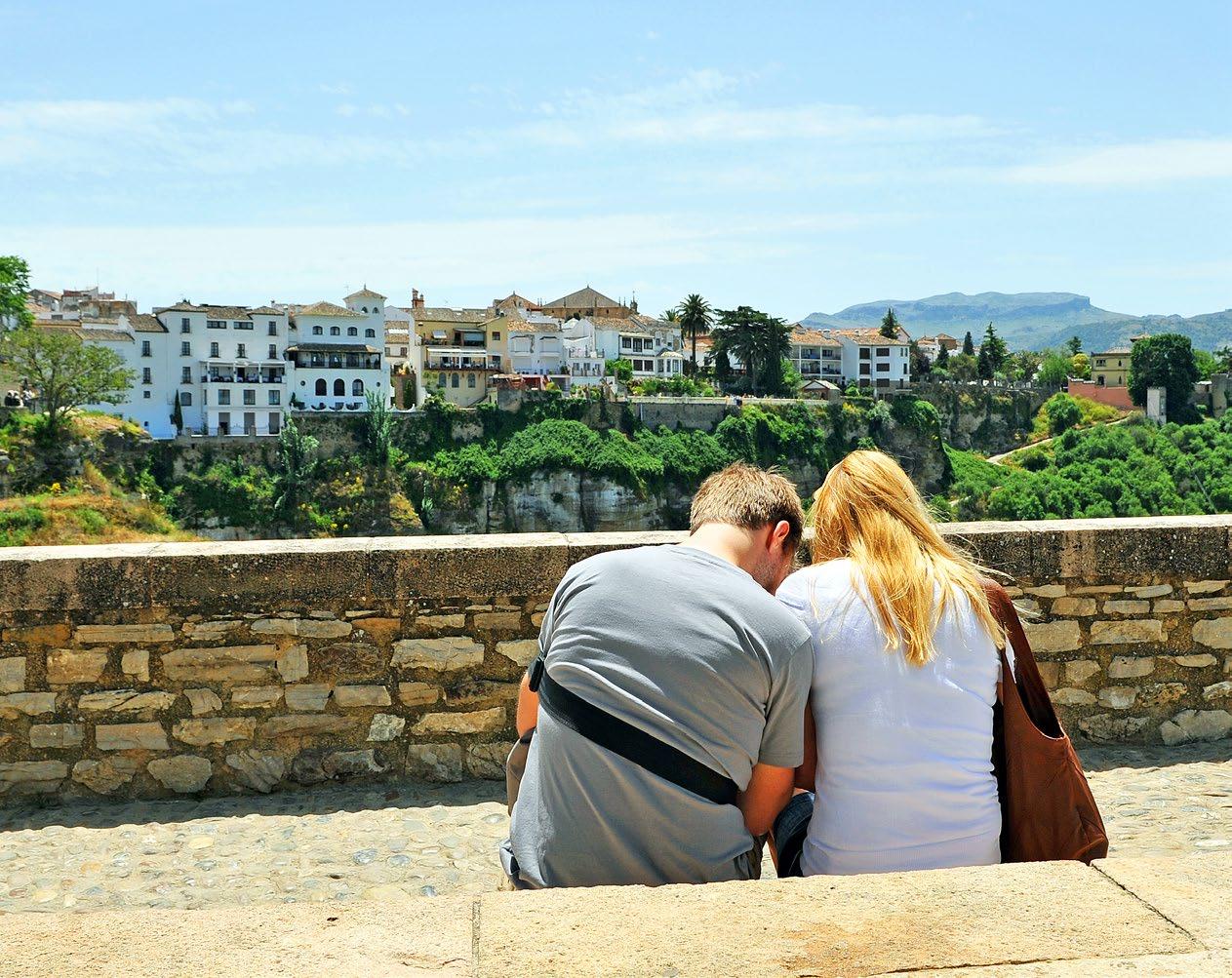
19
MALAGA, CITY OF MUSEUMS
MALAGA
RONDA MALAGA
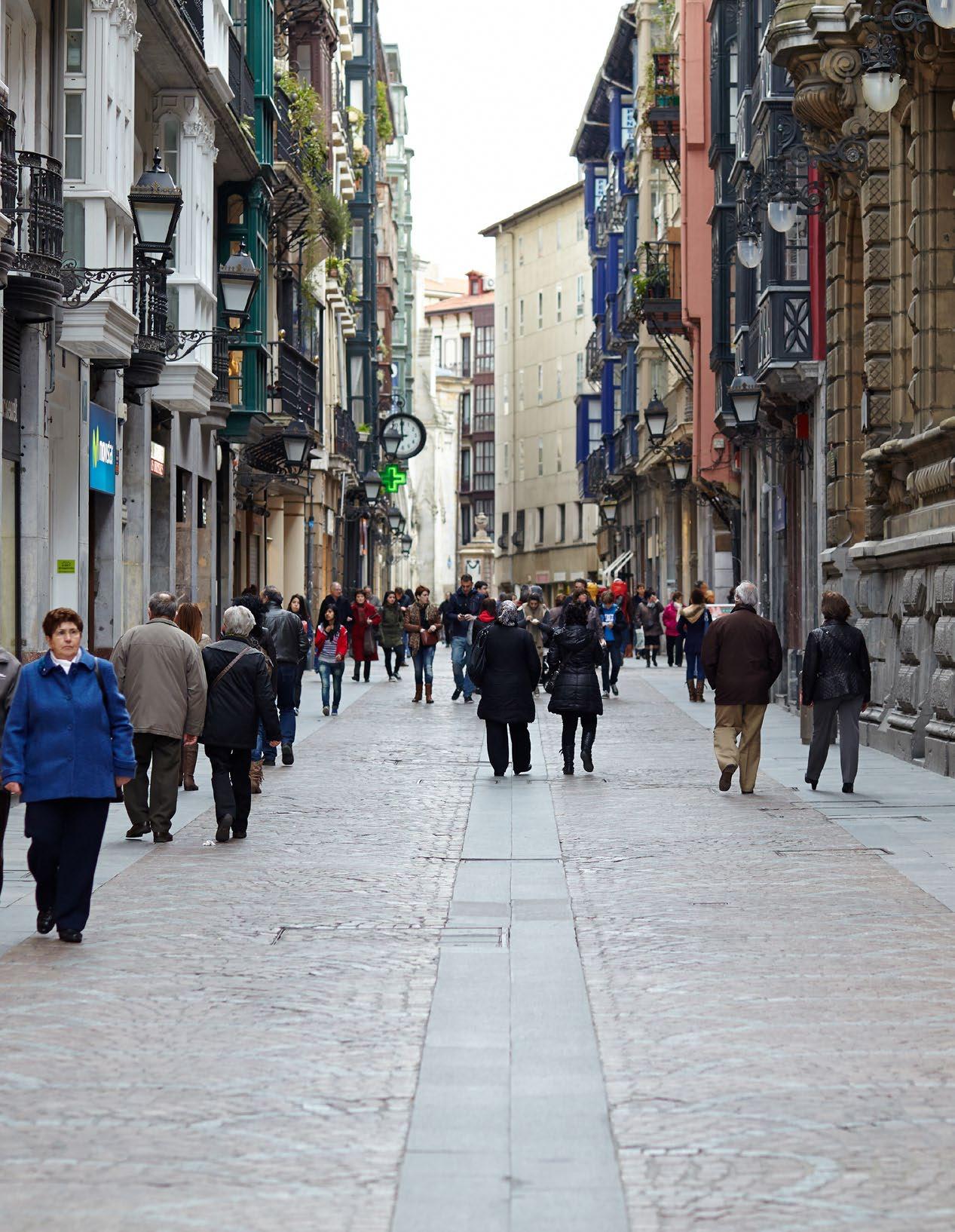
BILBAO, CITY OF GASTRONOMY
Bilbao is a hospitable city which invites you to stroll around and go shopping or discover surprising outdoor sculptures and buildings designed by some of the best architects in the world. Basque cuisine and its exquisite pintxos or aperitifs is yet another added value.
DAY 1: TRADITION AND AVANT-GARDE
Take the funicular up Mount Artxanda and enjoy one of the best panoramic views of Bilbao. This hundred-year-old train takes only three minutes to reach the Artxanda lookout point, with stunning views of the city and the surrounding hills.
Ride back down in the funicular and you'll reach the estuary. Then stroll along the paseo Campo Volantín walkway as far as the Zubizuri, a futuristic pedestrian bridge which leads to the Uribitarte Promenade. This landscaped route along the left bank of the estuary leads to the Guggenheim Museum Bilbao.
There you can enjoy masterpieces of modern and contemporary art. It also provides two first-class culinary experiences. Nerua, with one Michelin star and the Bistró Guggenheim Bilbao. In the area surrounding the museum you'll find Puppy, the famous sculpture shaped like a dog and covered with natural plants, as well as numerous places where you can sample delicious Basque cuisine.
Visit the Abandoibarra district where the city's shipyards used to be and which have been immortalised in the numerous sculptures you'll see as you pass by. Very near here you'll find another great gallery, the Bilbao Museum of Fine Arts, with works by Goya, Velázquez and Picasso.
20
_ OLD TOWN BILBAO
Photo: Bilbao Tourist Board
CITY BREAKS
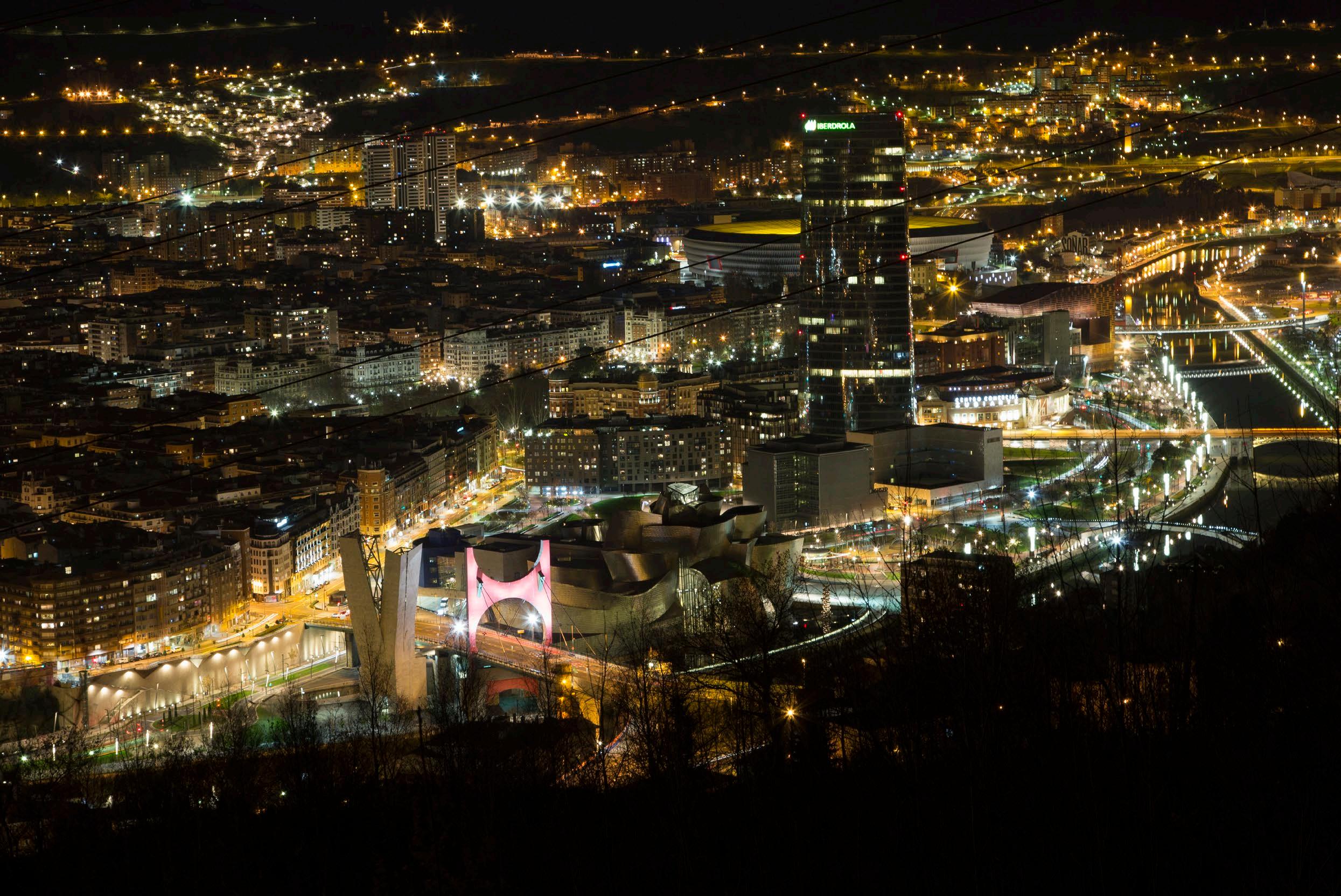
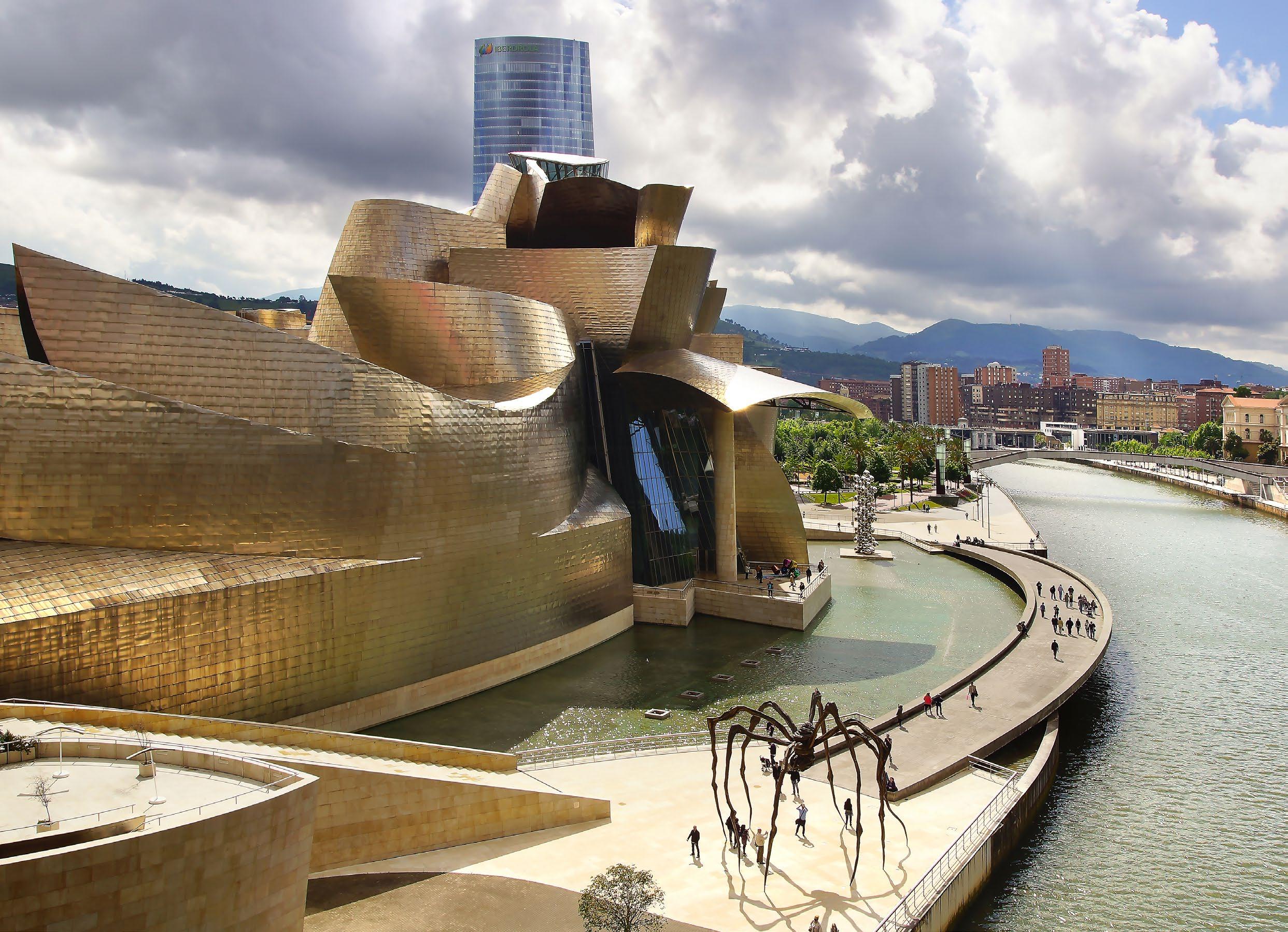
21
BILBAO, CITY OF GASTRONOMY
GUGGENHEIM MUSEUM BILBAO
Photo: Igor Plotnikov/123rf.com
MOUNT ARTXANDA BILBAO
Photo:
javitrapero/123rf.com
The Bilbao Guggenheim Museum, designed by Frank Gehry, is the international symbol of the city.

This pleasant walk takes you across the Pedro Arrupe bridge and onto the campus of the University of Deusto, comprising a number of buildings of great architectural value. Special mention should go to the main building in Classicist style. In the interior you'll find a great central staircase, the library (now a conference room), a Gothic chapel and an auditorium. Further along the Botica Vieja riverbank you'll be able to enjoy another of the city's defining views. To the right, a gigant stone tiger crowns a former important factory.
Discover Bilbao’s night life in Azkuna Zentroa, an old wine warehouse refurbished by the designer Philippe Starck. You’ll find a culture and leisure centre where everything imaginable is possible: exhibitions, concerts, swimming pool, restaurants, shops, cinemas...
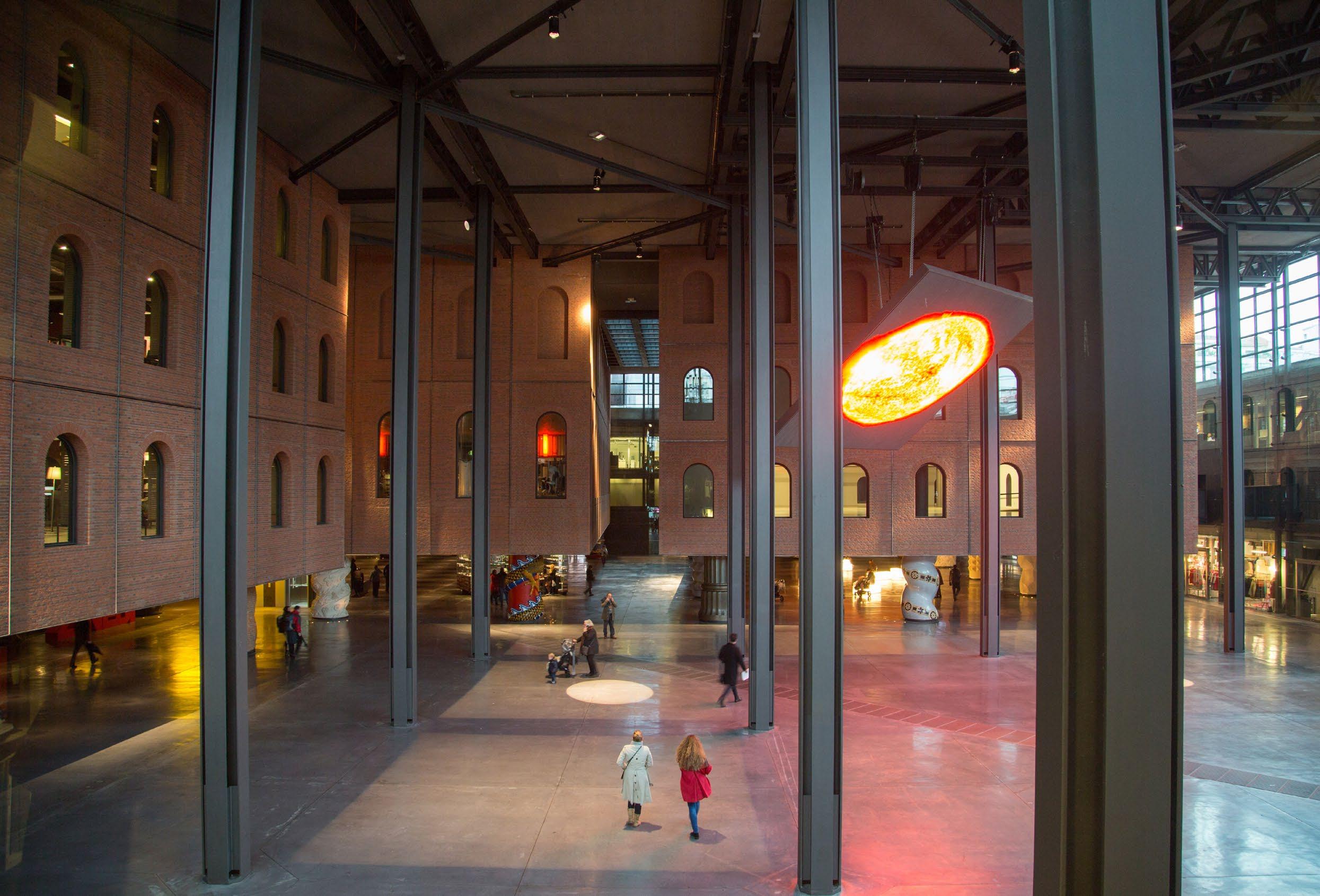
22 CITY BREAKS
PINTXOS
b AZKUNA ZENTROA BILBAO
Photo: Yulia Grogoryeva/123rf.com
Photo: Bilbao Tourist Board
DAY 2: GET TO KNOW BILBAO THROUGH ITS FLAVOURS
You should spend the morning of your second day quietly enjoying the old town, also known as the “Siete Calles de Bilbao”, or Seven Streets of Bilbao. An ideal area where you'll be surrounded by shops, restaurants and churches like that of San Antón and the Cathedral of Santiago Stop for a rest in the Plaza Nueva and try some delicious aperitifs in some of the best bars in the old town.
From the monumental Arriaga Theatre, cross over the Zubia Bridge and continue your gastronomic journey in what is called the Ensanche. This area features bars serving exquisite pintxos in the Gran Vía, Calle Albia and the Plaza Circular. It is one of the best shopping and cultural districts in Bilbao, with hundreds of shops, cafés and theatres.
IF YOU HAVE MORE TIME…
You'll find Donostia/San Sebastián fascinating. This beautiful city is the capital of Guipúzcoa and is a perfect blend of architecture, gastronomy and the sea. The different neighbourhoods are home to buildings in the style of the Belle Epoque, like the Victoria Eugenia Theatre and the Town Hall.
Nearby there are beautiful seafaring towns like Orio, Zarautz and Getaria, home to the Cristóbal Balenciaga Museum. This is the birthplace of the famous fashion designer and of Juan Sebastián Elcano, the navigator who completed the first circumnavigation of the Earth.
L Further information: www.bilbaoturismo.net

The Bizkaia Bridge, connecting the towns of Portugalete and Getxo, better known as the hanging bridge, is a UNESCO World Heritage Site and really should not be missed. It is one of the oldest and most original transporter bridges in the world, and provides an incredible view of the countryside around the Bay of Abra.

BILBAO, CITY OF GASTRONOMY
a HISTORICAL TOWN CENTRE BILBAO
` DONOSTIA/SAN SEBASTIÁN 23
© Donostia San Sebastián Turismoa
VALENCIA, AVANT-GARDE CITY
Valencia is a place you're bound to love. Washed by the Mediterranean, it is the capital of the Region of Valencia and is famous for its beaches and exceptional climate. You'll find traces of the remote past in the old town centre and be amazed by its avant-garde buildings. History, tradition and the future await you in this city full of contrasts.

DAY 1: AVANT-GARDE VALENCIA
Leave a full morning free for visiting one of Europe's largest centres for the promotion of science and culture: the City of Arts and Sciences. Walking amongst penguins, observing the earth from space and going inside the DNA structure are just some of the surprises that await you in this futuristic venue.
It was designed by the architects Santiago Calatrava and Félix Candela, and engineers Alberto Domingo and Carlos Lázaro, and consists of several buildings with amazing avant-garde architecture. After crossing l'Umbracle, an enormous landscaped garden with sculptures by contemporary artists, you will come to
a colossal transparent glass structure. This is the Museu de les Ciències. Here the motto is, “Forbidden not to touch”, and it contains a number of interactive exhibitions.
In L'Oceanogràfic, the largest aquarium in Europe, you can learn about the sounds of the sea and walk along surrounded by sharks. The stunning Hemisfèric houses a cinema which shows films in three-dimension and IMAX digital format. And finally, there's the Palau de les Arts auditorium, a building designed in the form of an immense sculpture that is a venue for theatre, music and dance.
24 CITY BREAKS
a CITY OF ARTS AND SCIENCES VALENCIA
Then you should visit the multicultural neighbourhood of Ruzafa, an area full of contrasts and one of the most fashionable in Valencia. Ruzafa Market is the nerve centre of this neighbourhood. Stroll around its stalls and immerse yourself in a world of colours and flavours. The surrounding area is full of restaurants, bars and shops where you'll find a souvenir so as not to forget your stay in the city of the Turia.
Just 20 kilometres from the city you can spend a relaxing evening in the Albufera Nature Reserve, a navigable wetland with a great variety of flora and fauna. This privileged environment will transport you to a world of unspoiled nature, where the only sounds you'll hear will be the birds singing and water trickling.
DAY 2: TRADITIONAL VALENCIA
Start the day in the heart of Valencia with a visit to the World Heritage Silk Exchange. It is one of the most impressive civil Gothic buildings in Europe (UNESCO World Heritage), and includes such fascinating elements as the hall of Columns and the patio of the Orange Trees.
Nearby you'll find the Miguelete as the bell tower of Valencia Cathedral is known. From the top, you get a beautiful panoramic view of the city. From here, as you go towards the banks of the Turia River you'll come to the Serranos towers, a gateway in the medieval city walls used as a prison for knights and noblemen until the end of the 19th century.


25
VALENCIA, AVANT-GARDE
CITY
SILK EXCHANGE VALENCIA
EL MIGUELETE TOWER VALENCIA
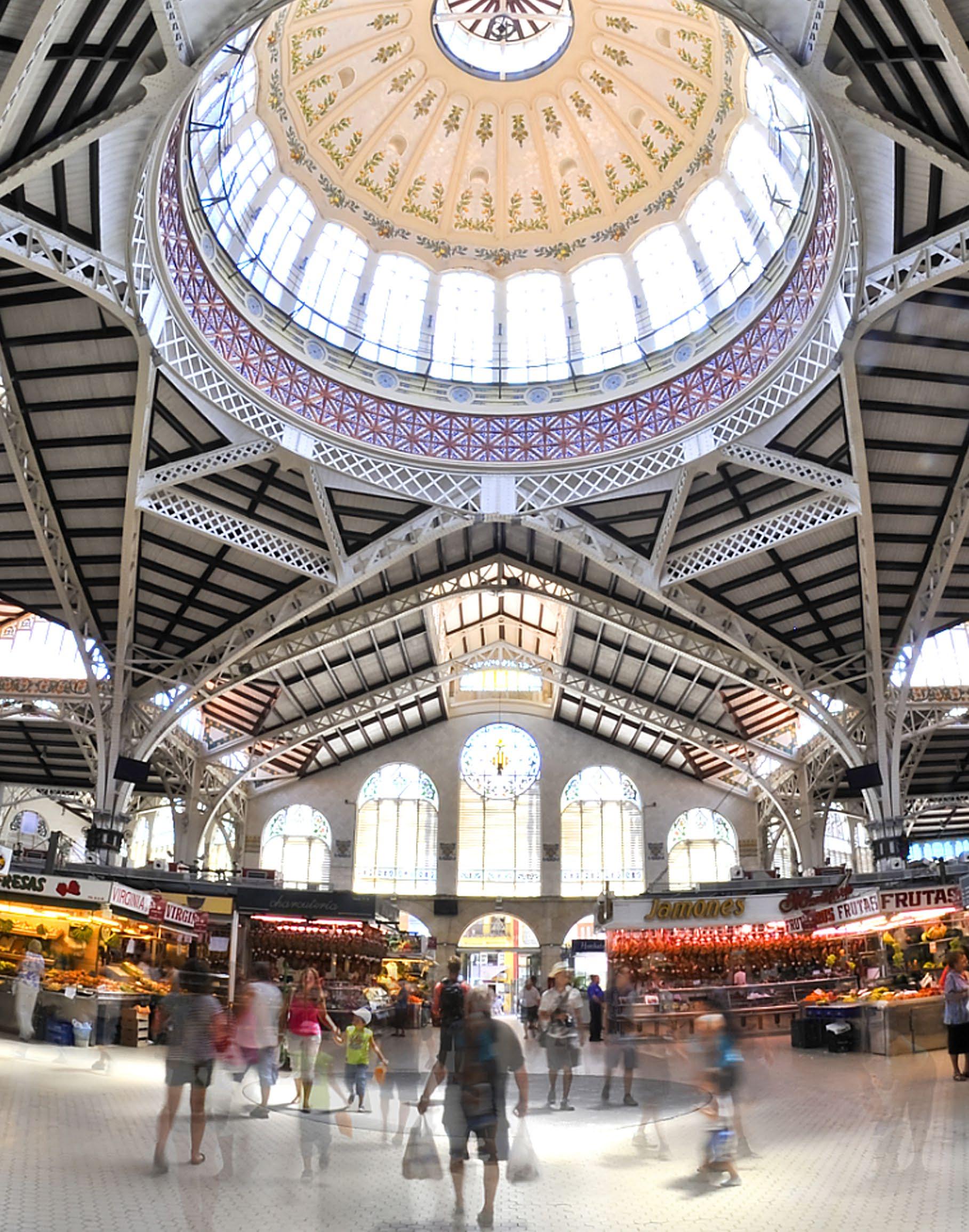
Once there you can stroll around or stop for a rest in any of the beautiful spots in the Turia gardens. It is one of the largest urban green parks in Spain, a paradise for joggers, cyclists, families and nature lovers. At one of the bends of the river you'll find the IVAM (Valencian Institute of Modern Art), which exhibits the evolution of Spanish art, from the crisis in classic avant-guard art up to the sixties.
If you feel like eating somewhere different, then take a walk in the old town as far as the Central Market, a Modernist gem where you'll find products from Valencia's sea and gardens. Stroll around the traditional stalls and delicatessens and admire the light shining through the domes and stained glass windows.
And your trip could not be complete without a little shopping. In the picturesque neighbourhood of El Carmen you'll find souvenirs, culinary delights, top fashion, exclusive porcelain and footwear designed and manufactured in the Valencia region.
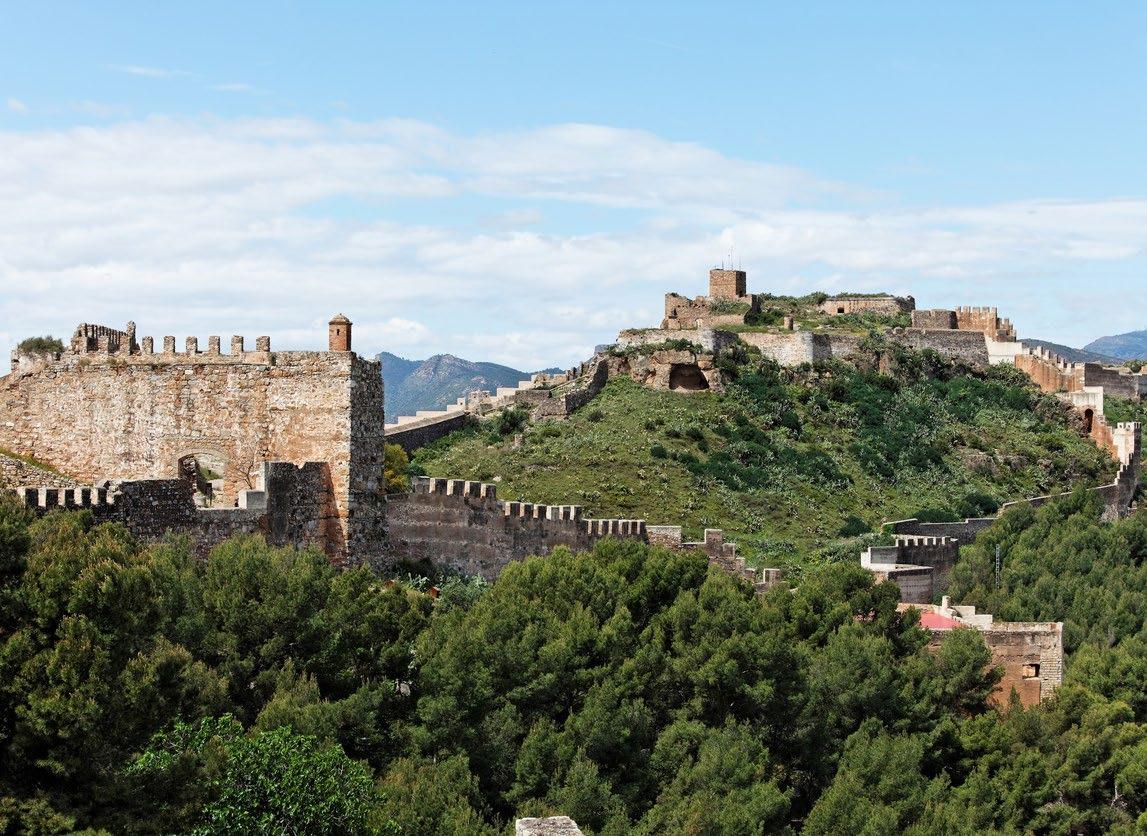
IF YOU HAVE MORE TIME…
With more than 2,000 years of history, in the city of Sagunto there is a lot to see. The highlights are the Roman ruins and Sagunto Castle
The region of Utiel-Requena is famous for its wines. Visit the vineyards that dot the rocky landscape. Stop off at a wine-cellar and taste the wine from the area.
Manises is famous for its pottery. Here there a several museums and you can admire the Els Arcs aqueduct.
L Further information: www.visitvalencia.com
26 CITY
BREAKS
a SAGUNTO VALENCIA
a CENTRAL MARKET VALENCIA
PALMA, MEDITERRANEAN CITY
Culture, beaches, nature, great alternatives for leisure and relaxation... The capital of the island of Mallorca has so much to offer. You'll be amazed by the historical old town and the surrounding areas.
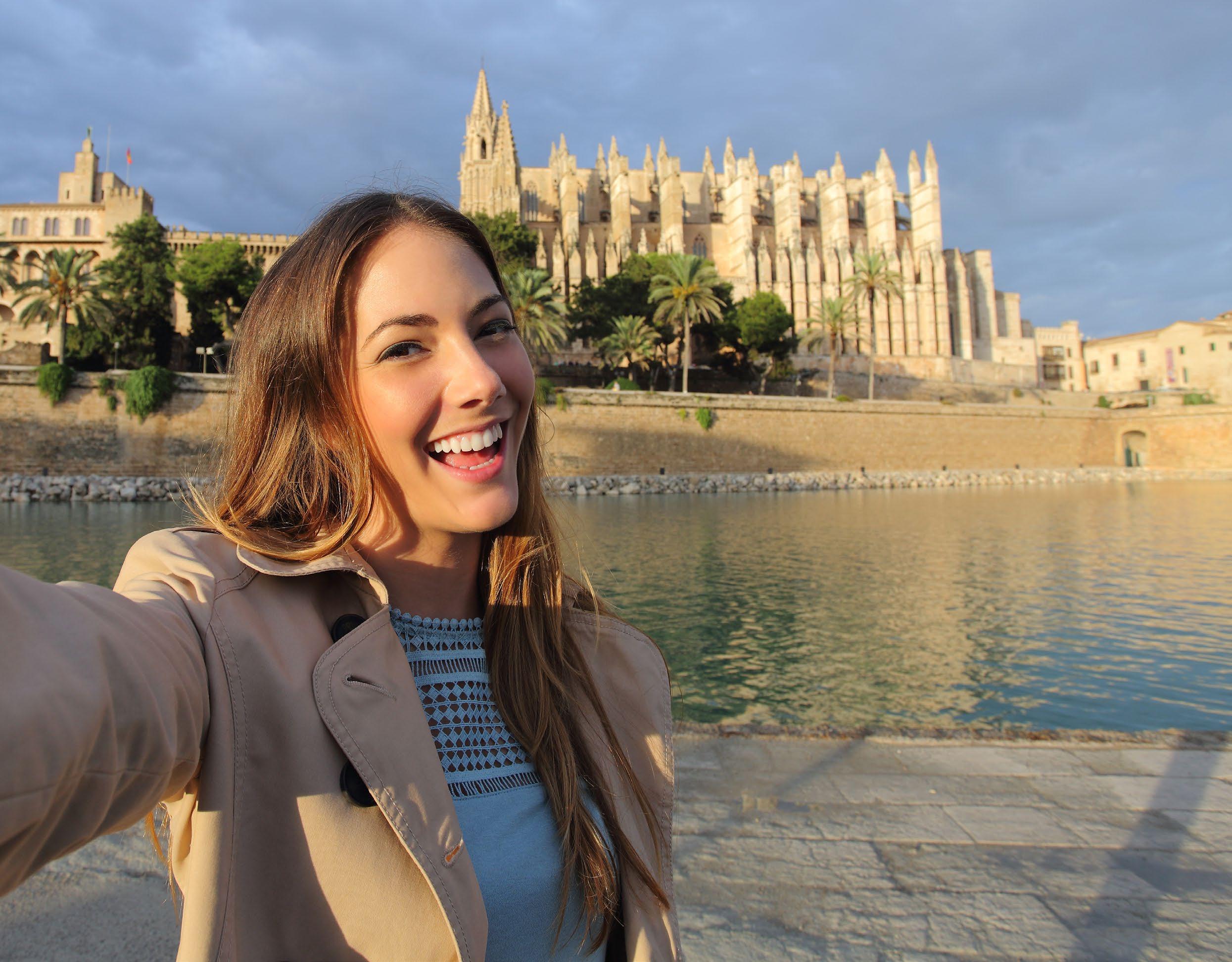
DAY 1: BEACHES AND CULTURE
Start your tour of the city in the delightful Plaza de la Reina. It has a central round fountain and a pretty garden with flowers and tall trees.
It is less than a five-minute walk to the Almudaina Royal Palace. In the interior there are Moorish baths, collections of Flemish tapestries and vintage clocks, palatial rooms...
At the foot of the Almudaina you'll find the charming gardens of S'Hort del Rei, which are a blend of a traditional
Mallorcan garden with Andalusian elements like the water fountains in the Generalife in Granada.
From there, continue along what used to be the city wall until you reach La Seu, the cathedral of Palma. This is a chance to see one of the most spectacular rose windows in the world, known as the “eye of the Gothic era”. The cathedral was renovated by Antonio Gaudí and contains a spectacular mural by the Mallorcan painter Miquel Barceló in one of the chapels.
27
a MAJORCA CATHEDRAL PALMA
You really shouldn't miss resting on one of the fine sandy beaches and taking a dip in the turquoise blue waters. Apart from the beach of Playa de Palma, if you're looking for sea, sand and sunshine you should try Portitxol, Arenal, Caló des Grells or Cala Comptessa which are all near the centre of the city. You'll think you're in paradise.
In the afternoon we suggest a shopping trip in the Plaza de Cort area where you'll find the Town Hall with its beautiful Baroque facade. From here you can
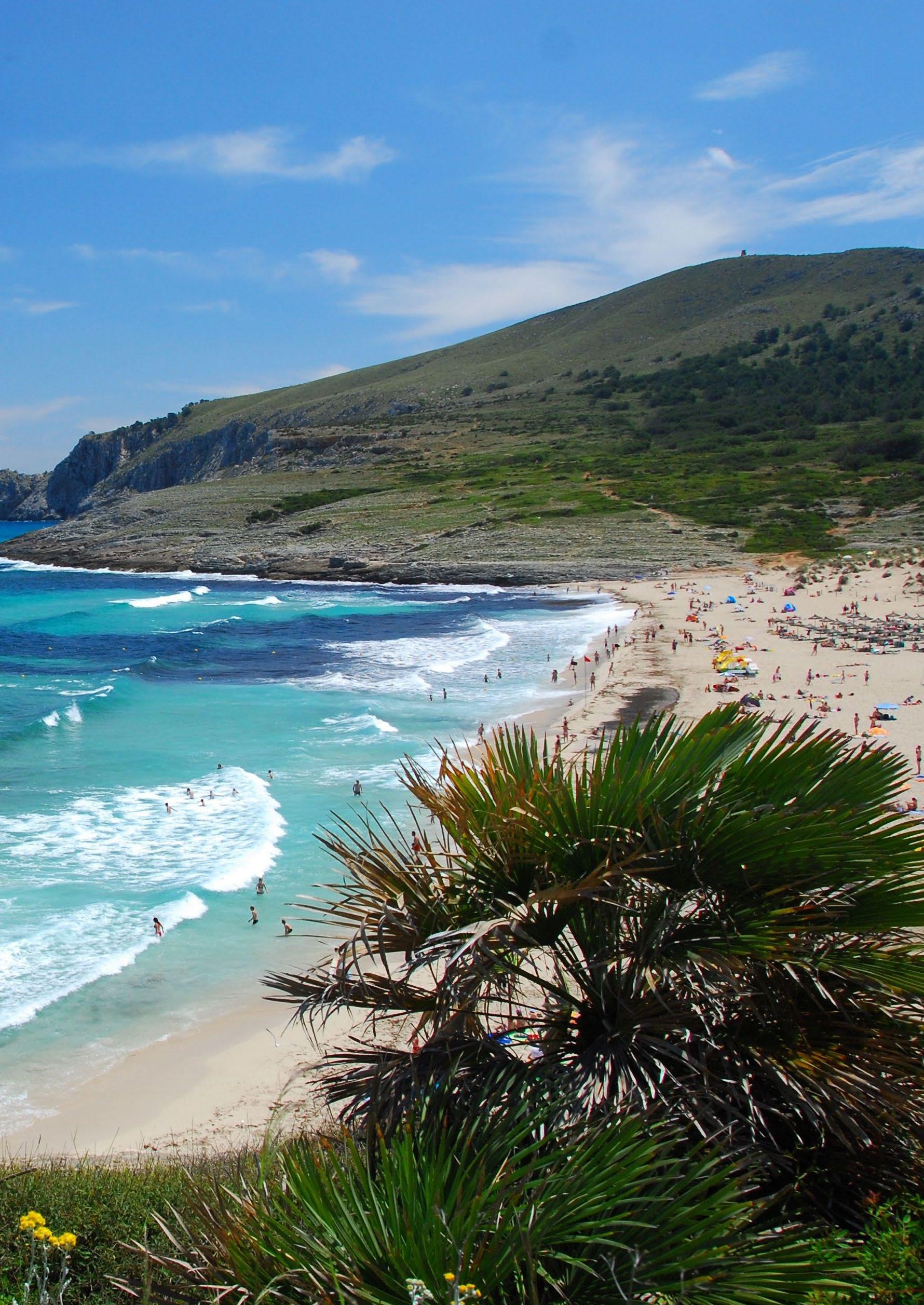
access a number of streets where the spirit of the old-fashioned merchant still prevails, like the Paseo de la Artesanía, where genuine craft work can still be found.
Then you'll come to the Paseo del Borne, where you'll find the most exclusive shops as well as restaurants and bars where you can sample and purchase typical Mallorcan specialities like sobrasada sausage and “ensaimada” pastry, as well as the best international cuisine.
CITY BREAKS
28
DAY 2: MUSEUMS AND SHOPPING
The Palau March and its museum are located between the Plaza de la Reina and the Almudaina. Its patios are home to an excellent collection of contemporary sculpture, with works by Rodin, Moore and Chillida, amongst others. The interior rooms contain such gems as an 18th century Neapolitan nativity scene and a valuable library containing incunables, codices and nautical charts.
Learn about the history of the city through its archaeology in the Mallorca Museum and the Moorish baths in the Can Fontirroig gardens. This is one of very few monuments remaining in Palma from the time of Moorish occupation.
On your way to the Plaza Mayor, remember to stop in front of the adjoining facades of Can Forteza-Rey and Almacenes El Águila, a fine example of the influence of Modernism on Palma's architecture. You can access the beautiful private patios by purchasing a guided tour.
A good choice for lunch would be one of the modern, alternative restaurants near the Olivar Market. This area has a wide choice of culinary establishments where you can try some of Mallorca's most exquisite products.
If you're looking for more culture, then go to the headquarters of the Pilar and Joan Miró Foundation on the outskirts of the city. This is where you'll find a good part of the legacy of Joan Miró, an area dedicated to contemporary artistic creation and where you can reflect on themes relating to the surrealistic works of this genius. You could also visit the Juan March Museum Foundation and enjoy the collection of works by 20th century Spanish artists like Picasso, Juan Gris and Salvador Dalí.
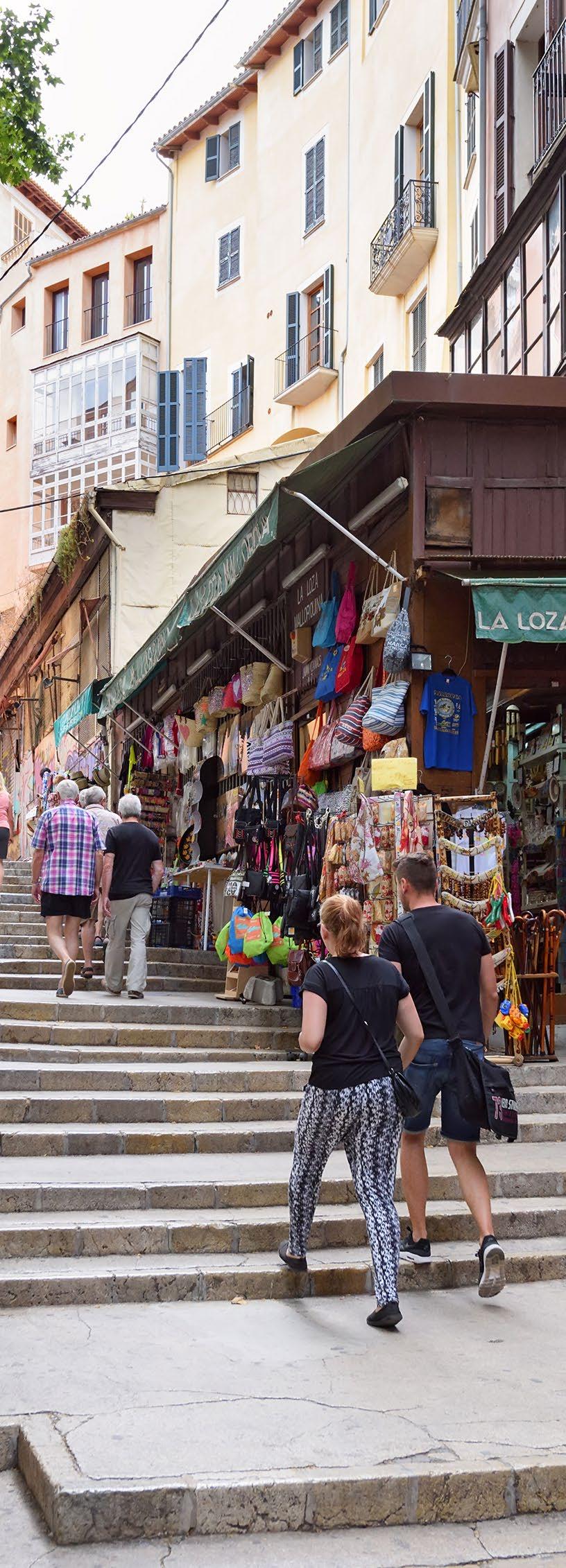
29
Photo: balakate/123rf.com
PALMA
` PALMA

IF YOU HAVE MORE TIME…
Very near the city you'll come to Valldemossa and the Real Cartuja, formerly a monastery and where the Polish composer Chopin lived with the French author George Sand. Manacor is renowned for the manufacture of beautiful artificial pearls. It is also the municipal district where you'll find extraordinarily beautiful underground caves like those of El Drach and El Hams.
After the museum you might like to go shopping, so we suggest a pleasant walk along La Rambla, with stalls selling flowers and plants, an image that would make an ideal postcard. Between La Rambla and the Plaza de España, the nerve centre of Palma, you'll find streets like Vía Sindicato and Jaime III, where there is a blend of traditional shops and modern stores selling perfume, accessories and fashion. For dinner, we recommend the delightful, unusual and fashionable neighbourhood of Santa Catalina. In what used to be where the fishermen lived you can now enjoy anything from Mediterranean cuisine to international gastronomic delicacies.
Then there's the wonderful Sierra de Tramuntana mountain range and the natural monument of Torrent de Pareis, a spectacular cliff. Are you ready for more? Take a dip at one of the beaches and coves. You can go hiking in the Mondragó Natural Park, take a boat trip to the Island of Cabrera or visit the stunning Gothic fortifications of the Bellver Castle.

30 CITY BREAKS
a PLAZA MAYOR SQUARE PALMA
Photo: Antonio Balaguer Soler/123rf.com















































